Exploring Small Town Maryland: Hagerstown
This past week I took a road trip from Washington D.C. to Columbus, Ohio. The journey takes a little under six hours and passes through the Appalachians, a mild set of mountains on America’s east coast dividing the industrial eastern half of America from the more laid back interior.
On the way, we passed through several small towns in Maryland. These towns are packed with history since they were on the front line of the American Civil War in the 1860’s. The first town we stopped in was Hagerstown, Maryland.
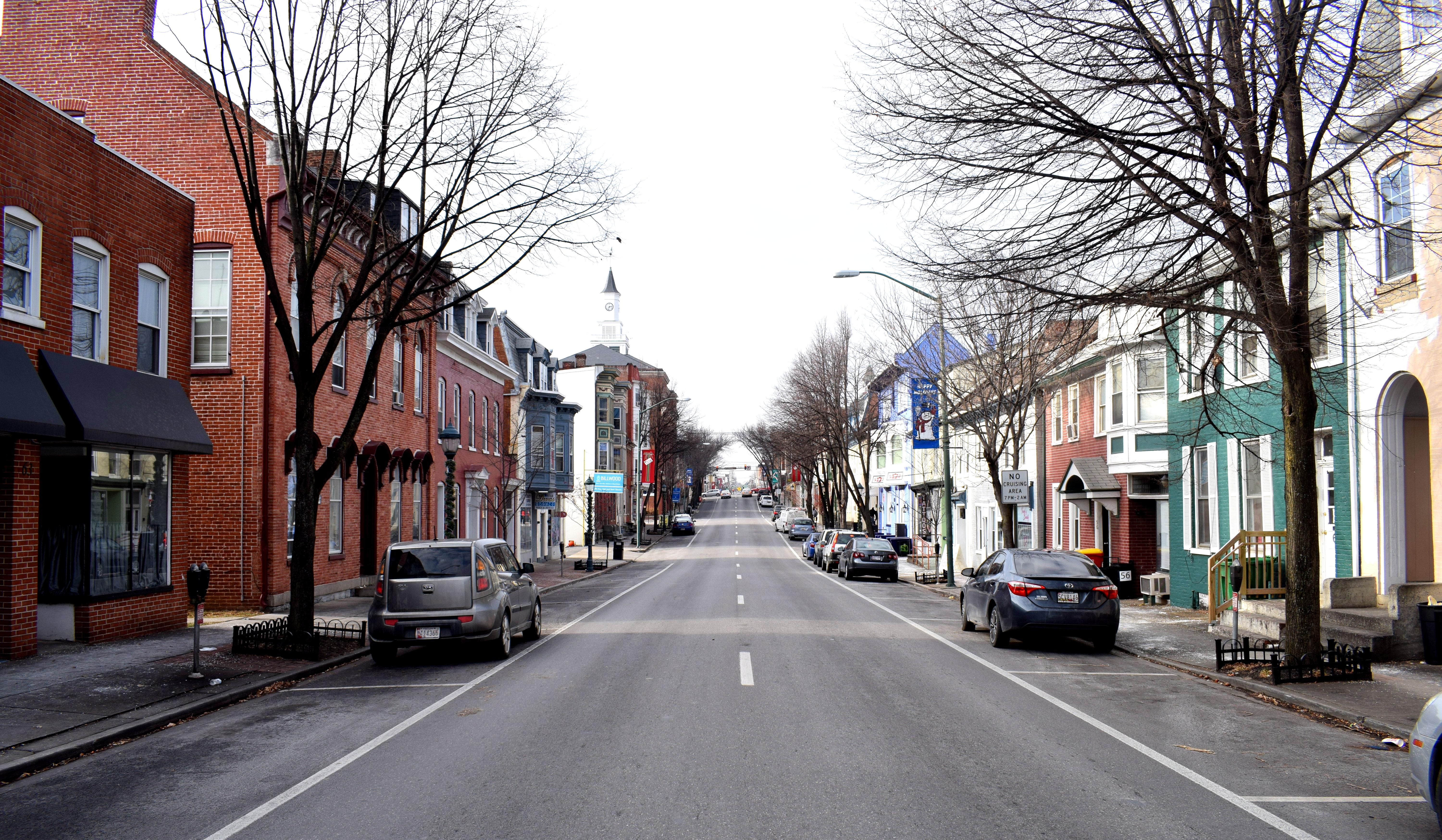 Hagerstown was founded by a German immigrant from Pennsylvania by the name of Jonathan Hager. Hager bought 200 acres of land in the Great Appalachian Valley in 1739 and named the city Elizabethtown after his wife. It was only in 1813 that the town’s name was changed to Hagerstown due to popular usage. Today the city is the capital of Washington County and has a population of 39,662 people.
Hagerstown was founded by a German immigrant from Pennsylvania by the name of Jonathan Hager. Hager bought 200 acres of land in the Great Appalachian Valley in 1739 and named the city Elizabethtown after his wife. It was only in 1813 that the town’s name was changed to Hagerstown due to popular usage. Today the city is the capital of Washington County and has a population of 39,662 people.
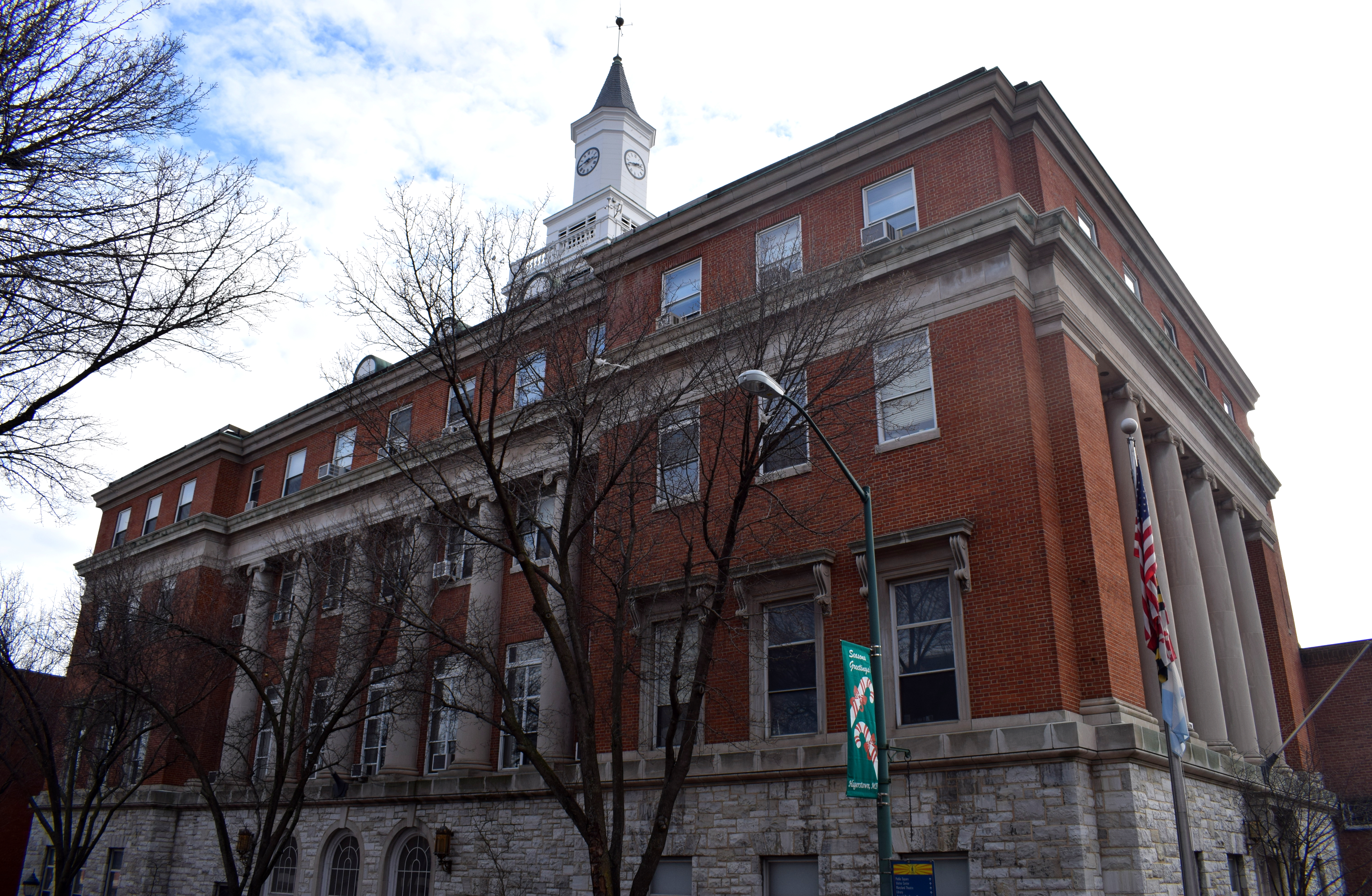
Hagerstown was attacked by the confederate army in 1864 during the American Civil War. The city sustained lots of damage then, but several homes from the colonial era survive to this day.
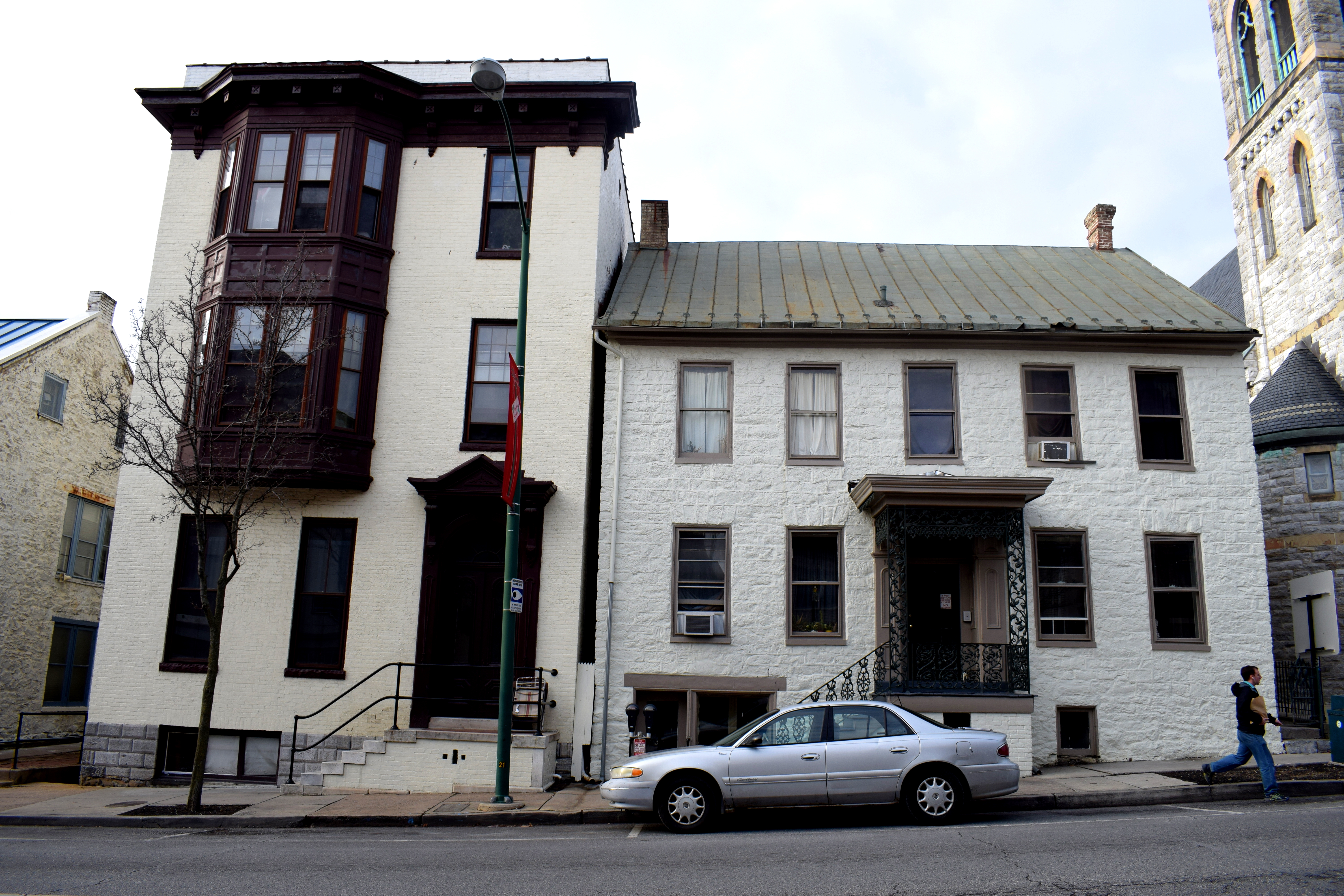 In the early 20th century the city was known as Hub City because of the large number of railroads passing through it. Hagerstown was one of the main stops on the Western Maryland Railway which connected Baltimore with Ohio. Unfortunately this railroad no longer operates passenger services today. Like most American railways, it was shut down in the 1950’s when cars became the main form of transport in the United States.
In the early 20th century the city was known as Hub City because of the large number of railroads passing through it. Hagerstown was one of the main stops on the Western Maryland Railway which connected Baltimore with Ohio. Unfortunately this railroad no longer operates passenger services today. Like most American railways, it was shut down in the 1950’s when cars became the main form of transport in the United States.
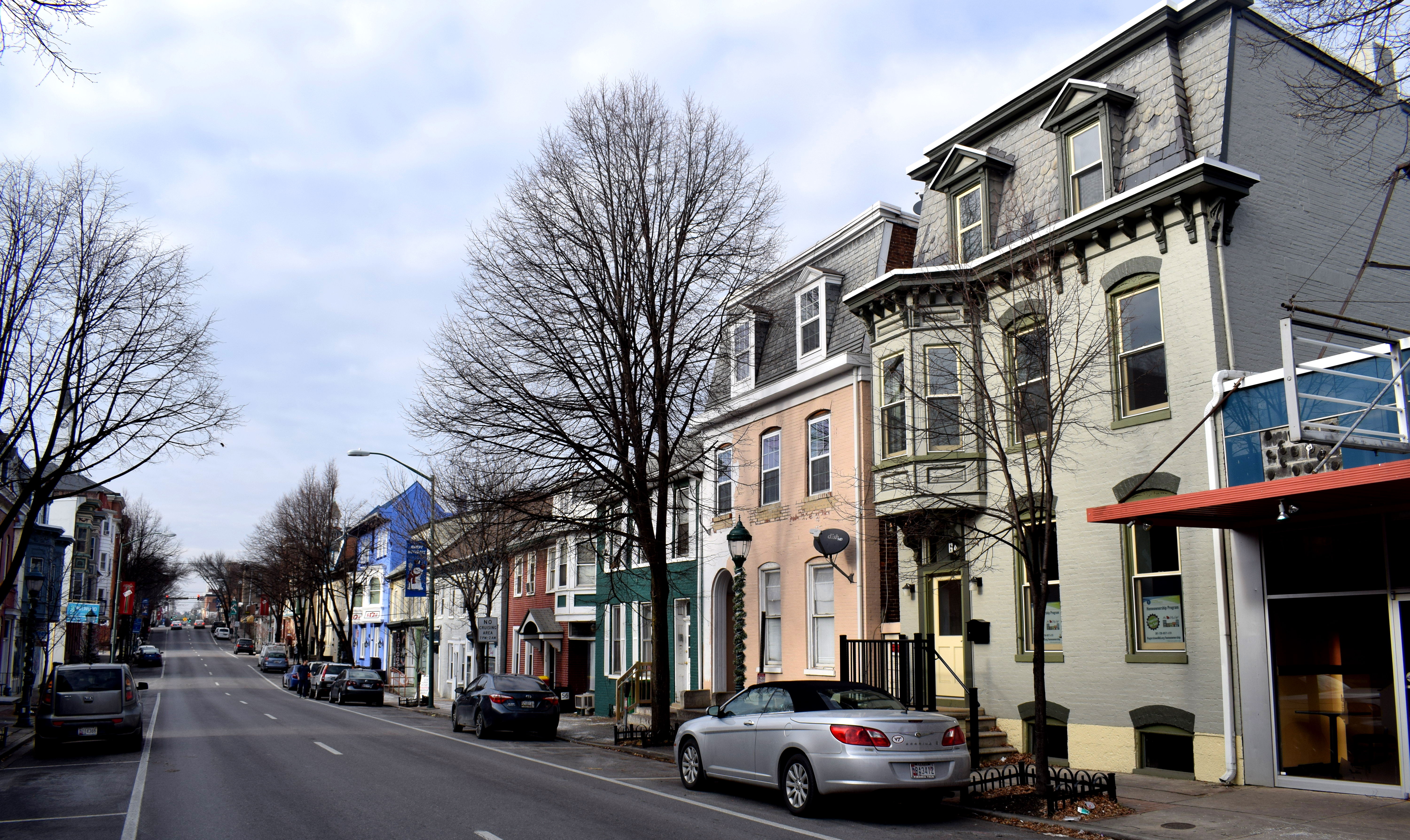 It was a cold winter afternoon in January when we visited. The city is located 68 miles from Washington DC and takes about an hour to get to. After passing through standard American suburbs with large shopping centers and parking lots, the town reveals a pleasant historic center.
It was a cold winter afternoon in January when we visited. The city is located 68 miles from Washington DC and takes about an hour to get to. After passing through standard American suburbs with large shopping centers and parking lots, the town reveals a pleasant historic center.
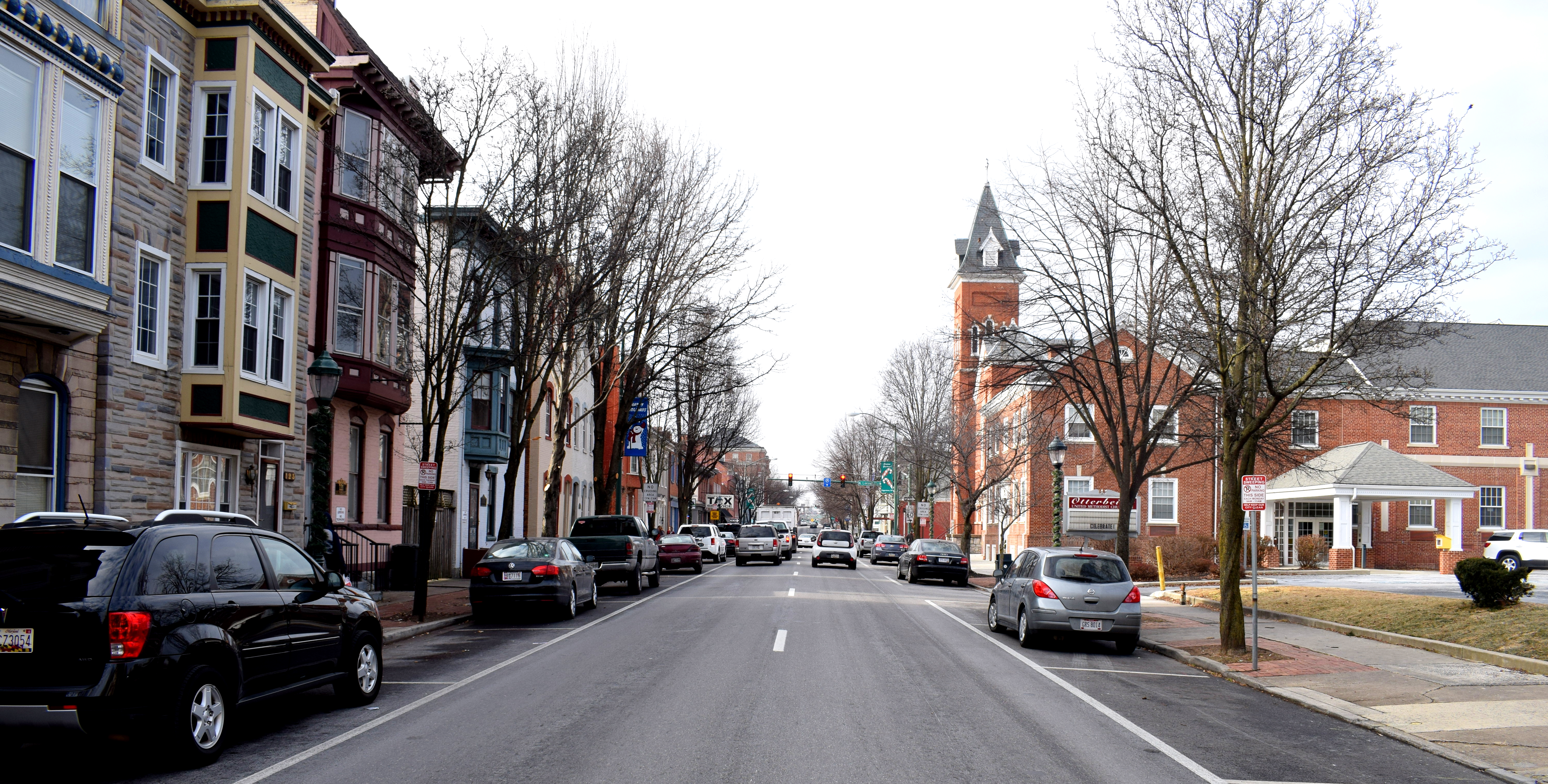 The streets in the center are lined with historic townhouses.
The streets in the center are lined with historic townhouses.
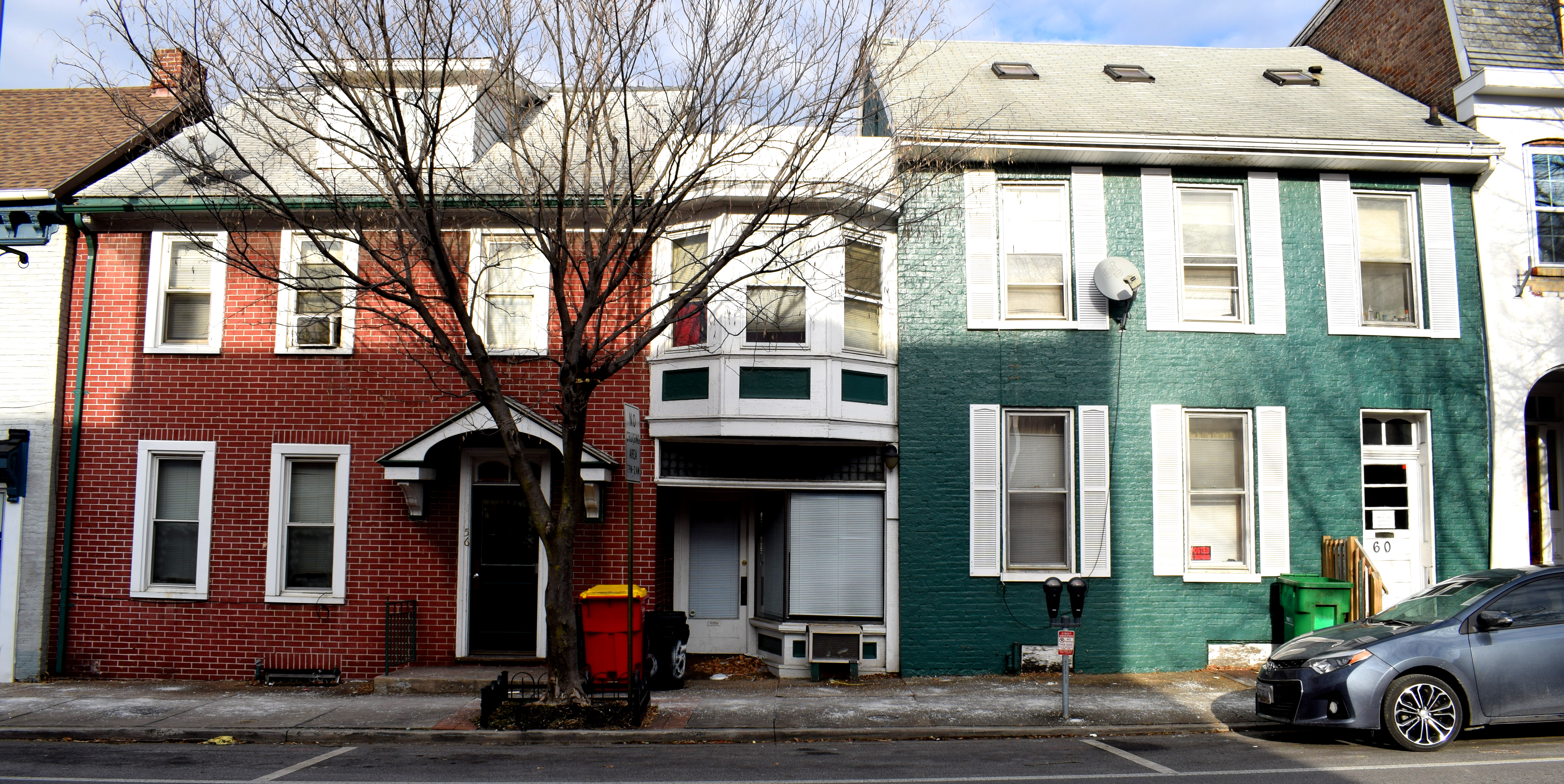 East Franklin Street is one of the main streets in the center and contains several of these townhouses and churches. Most of the homes on the street were built in the 1910’s and 1920’s.
East Franklin Street is one of the main streets in the center and contains several of these townhouses and churches. Most of the homes on the street were built in the 1910’s and 1920’s.
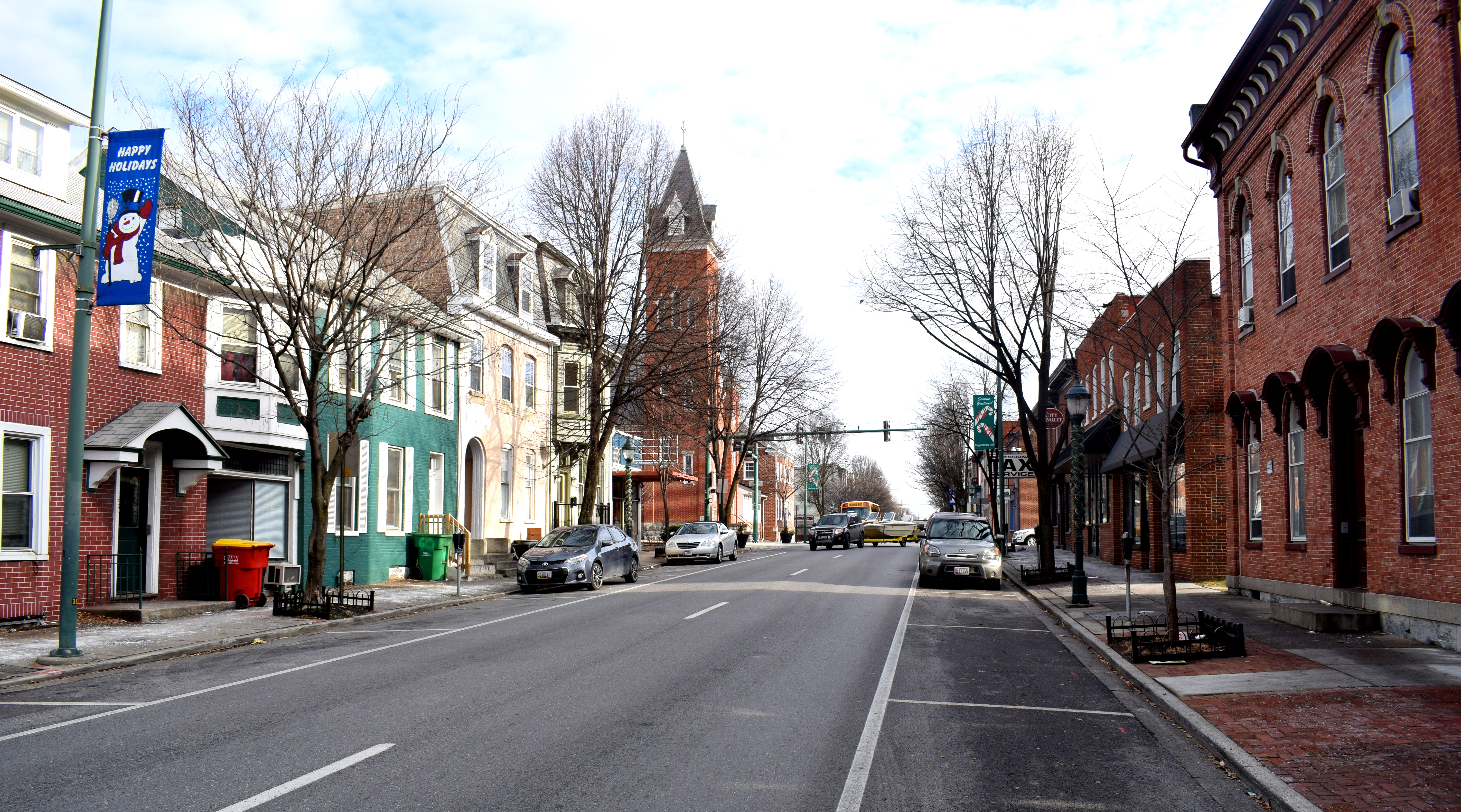 City Hall is also located on the East Franklin Street, on the corner with North Potomac Street.
City Hall is also located on the East Franklin Street, on the corner with North Potomac Street.
 A small town vibe dominates in Hagerstown. Most of the stores in the center are small businesses like cafes, restaurants, laundry shops or convenience stores.
A small town vibe dominates in Hagerstown. Most of the stores in the center are small businesses like cafes, restaurants, laundry shops or convenience stores.
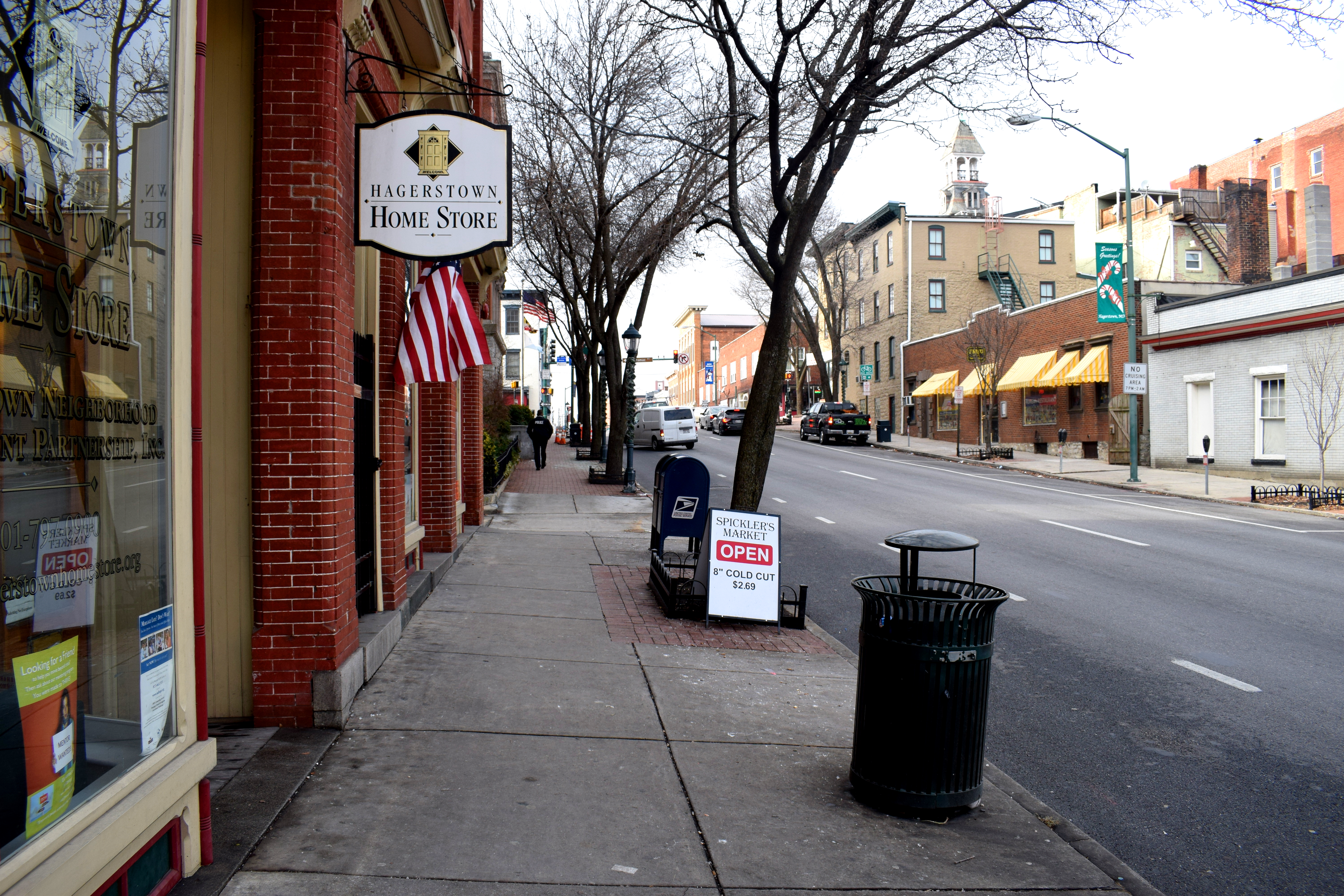 Another historic building.
Another historic building.
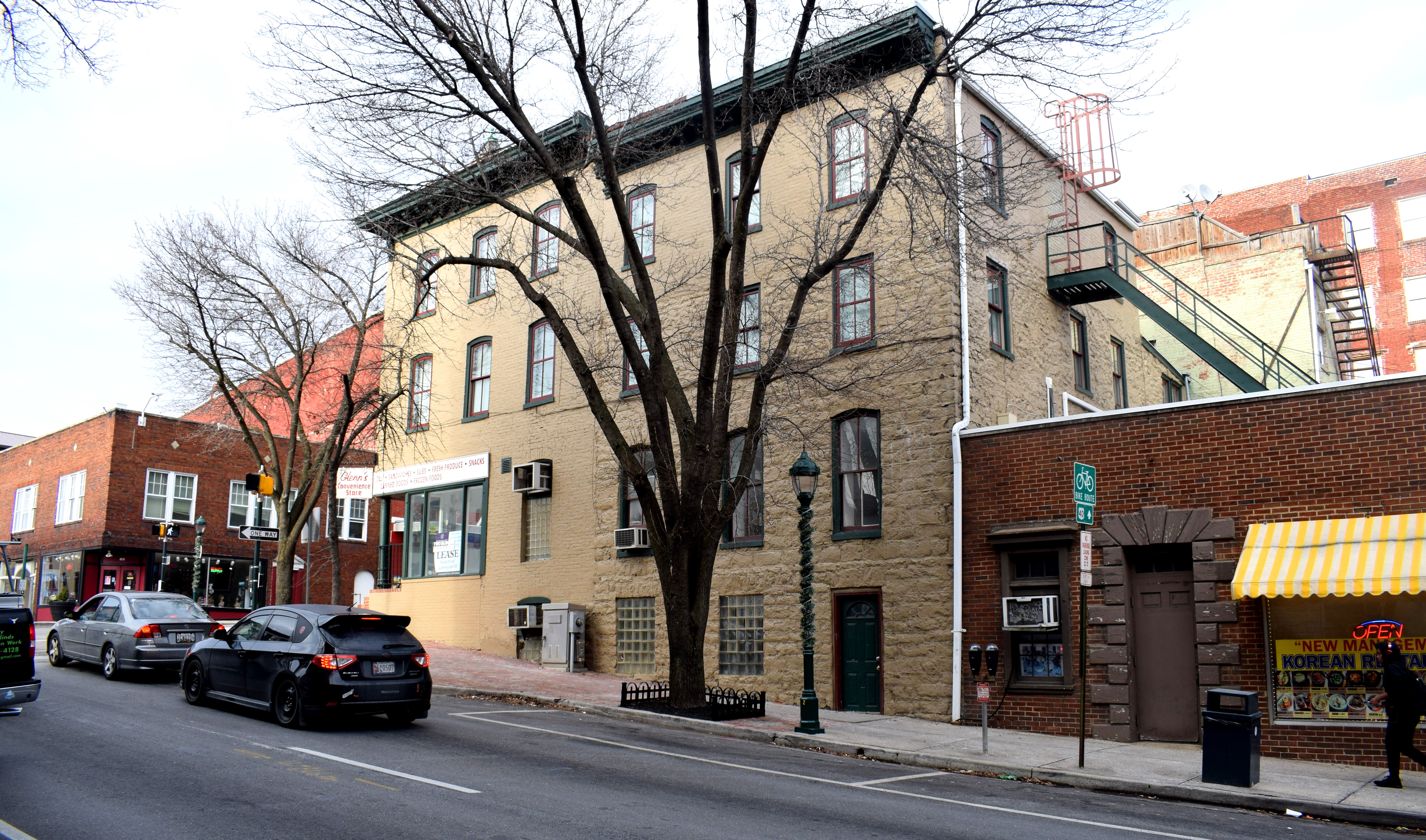 The main street in Hagerstown is North Potomac Street. In the early 20th century it was buzzing with activity. There were trams, squares filled with pedestrians, cafes and lots of restaurants. It looked like a picturesque European town.
The main street in Hagerstown is North Potomac Street. In the early 20th century it was buzzing with activity. There were trams, squares filled with pedestrians, cafes and lots of restaurants. It looked like a picturesque European town.
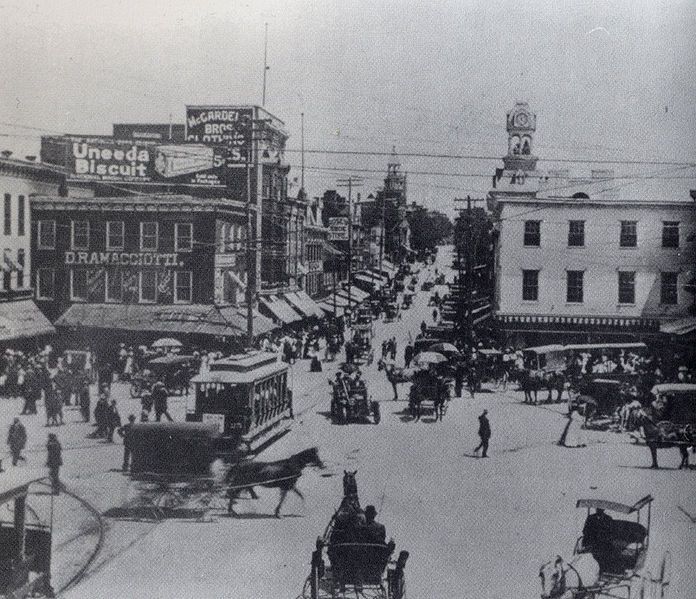
These old buildings still remain today, but the vibrancy and intimacy of the city has disappeared. You can blame the American car lobby for that. In 1956 Congress passed the Federal Highway Act to boost car ownership and encourage Americans to buy cars rather than use public transport. After virtually every American city was connected by highways, American railways collapsed and cities got rid of their trams. Larger American cities redesigned their city centers, tearing down old buildings and building skyscrapers instead. The European nature that predominated in most American cities disappeared afterwards.
 Only in smaller American towns such as Hagerstown can you still catch glimpses of that early 20th century America. Unfortunately not much remains. The buildings in Hagerstown may be old and historic, but the pedestrians seen in those early black and white photographs are gone, the trams are gone, the squares filled with people and cafes are gone. Instead we have parking spaces and car lanes.
Only in smaller American towns such as Hagerstown can you still catch glimpses of that early 20th century America. Unfortunately not much remains. The buildings in Hagerstown may be old and historic, but the pedestrians seen in those early black and white photographs are gone, the trams are gone, the squares filled with people and cafes are gone. Instead we have parking spaces and car lanes.
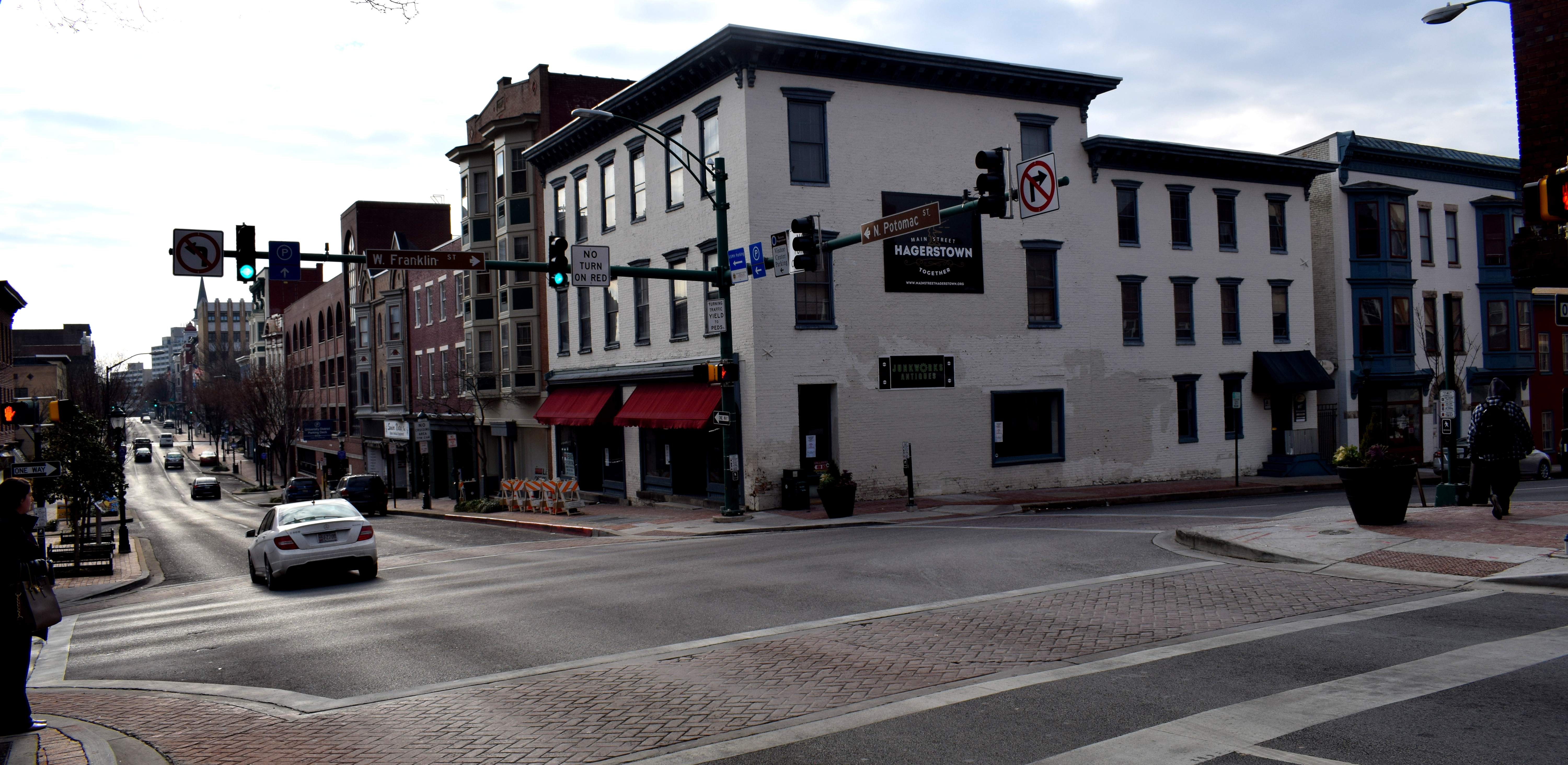 That does not mean everything is hopeless. North Potomac Street is still a beautiful street with tons of old buildings. It could easily be pedestrianized. Since Hagerstown is quite small overall, traffic could be rerouted to one of the other side streets without much difficulty.
That does not mean everything is hopeless. North Potomac Street is still a beautiful street with tons of old buildings. It could easily be pedestrianized. Since Hagerstown is quite small overall, traffic could be rerouted to one of the other side streets without much difficulty.
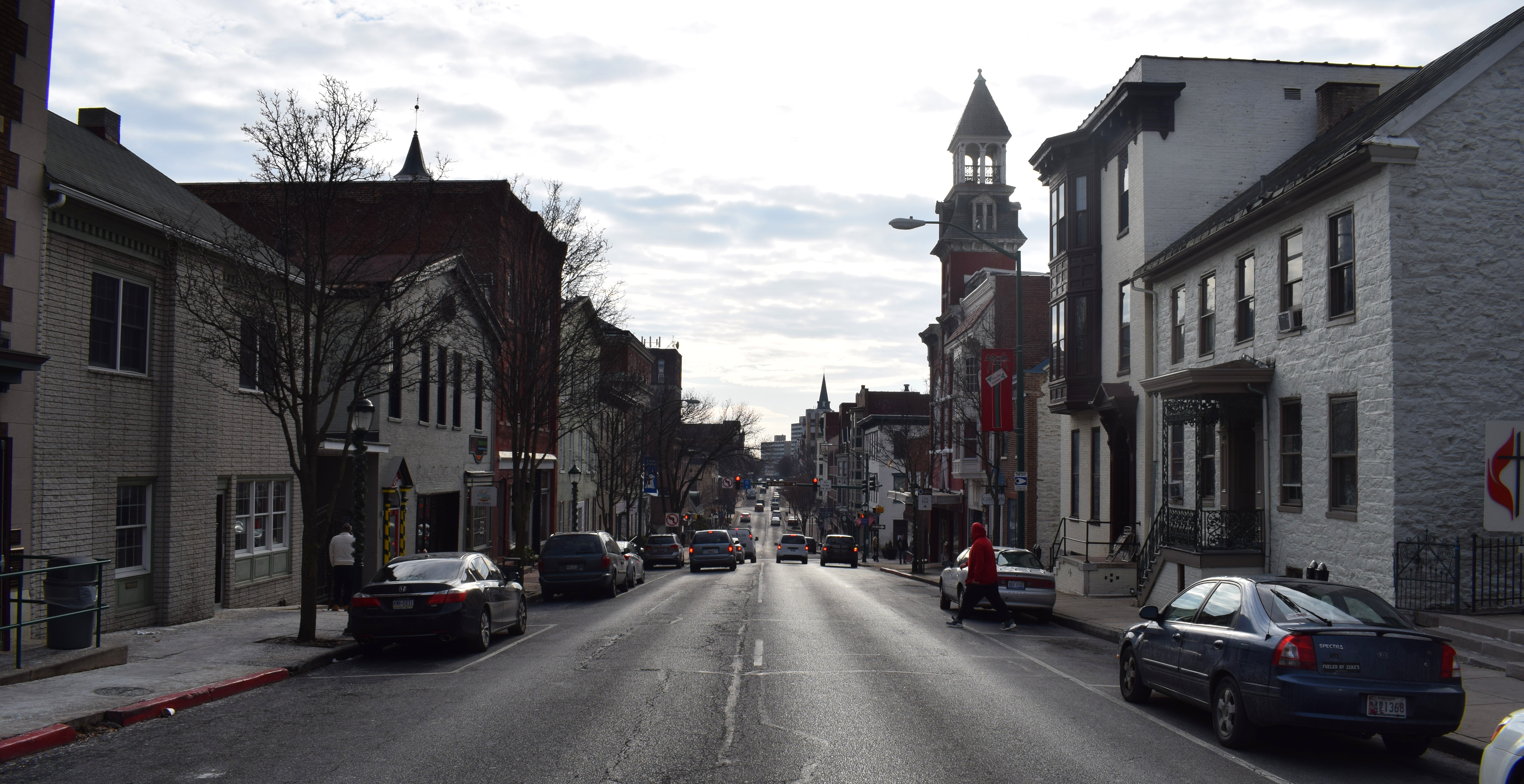 By creating a proper pedestrian street closed off for cars, the city could bring back some of that early 20th century vibrancy it once had. The next step would be to attract local businesses to relocate there. Such a street could boost the city’s brand and become a new symbol of the city. Hagerstown could re-market itself as an old historic civil war town just a quick day trip from Washington DC.
By creating a proper pedestrian street closed off for cars, the city could bring back some of that early 20th century vibrancy it once had. The next step would be to attract local businesses to relocate there. Such a street could boost the city’s brand and become a new symbol of the city. Hagerstown could re-market itself as an old historic civil war town just a quick day trip from Washington DC.
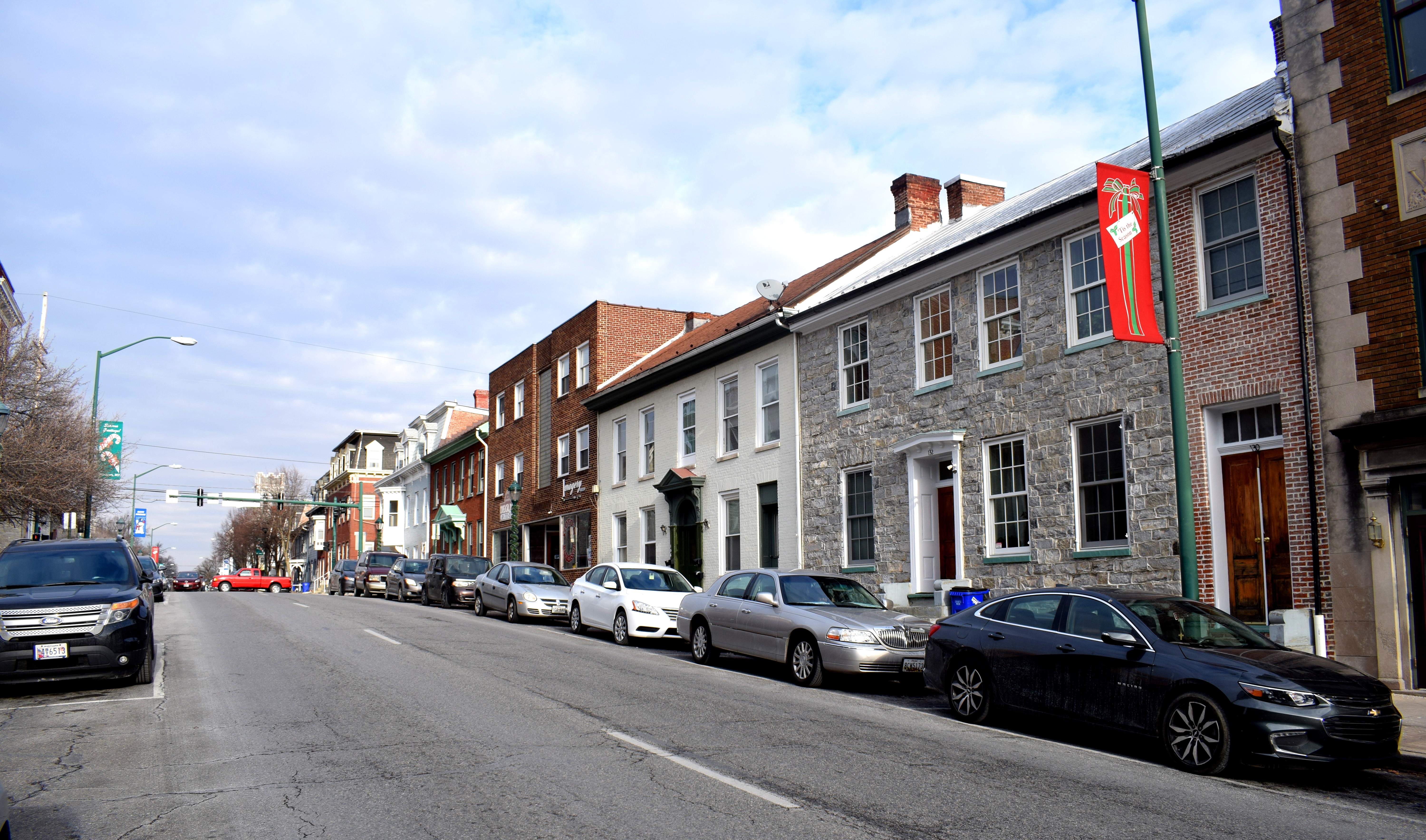 Frederick, Maryland has already been very successful in revamping its city center and showcasing its old architecture and history. There is no reason Hagerstown would not be able to follow in the same footsteps.
Frederick, Maryland has already been very successful in revamping its city center and showcasing its old architecture and history. There is no reason Hagerstown would not be able to follow in the same footsteps.
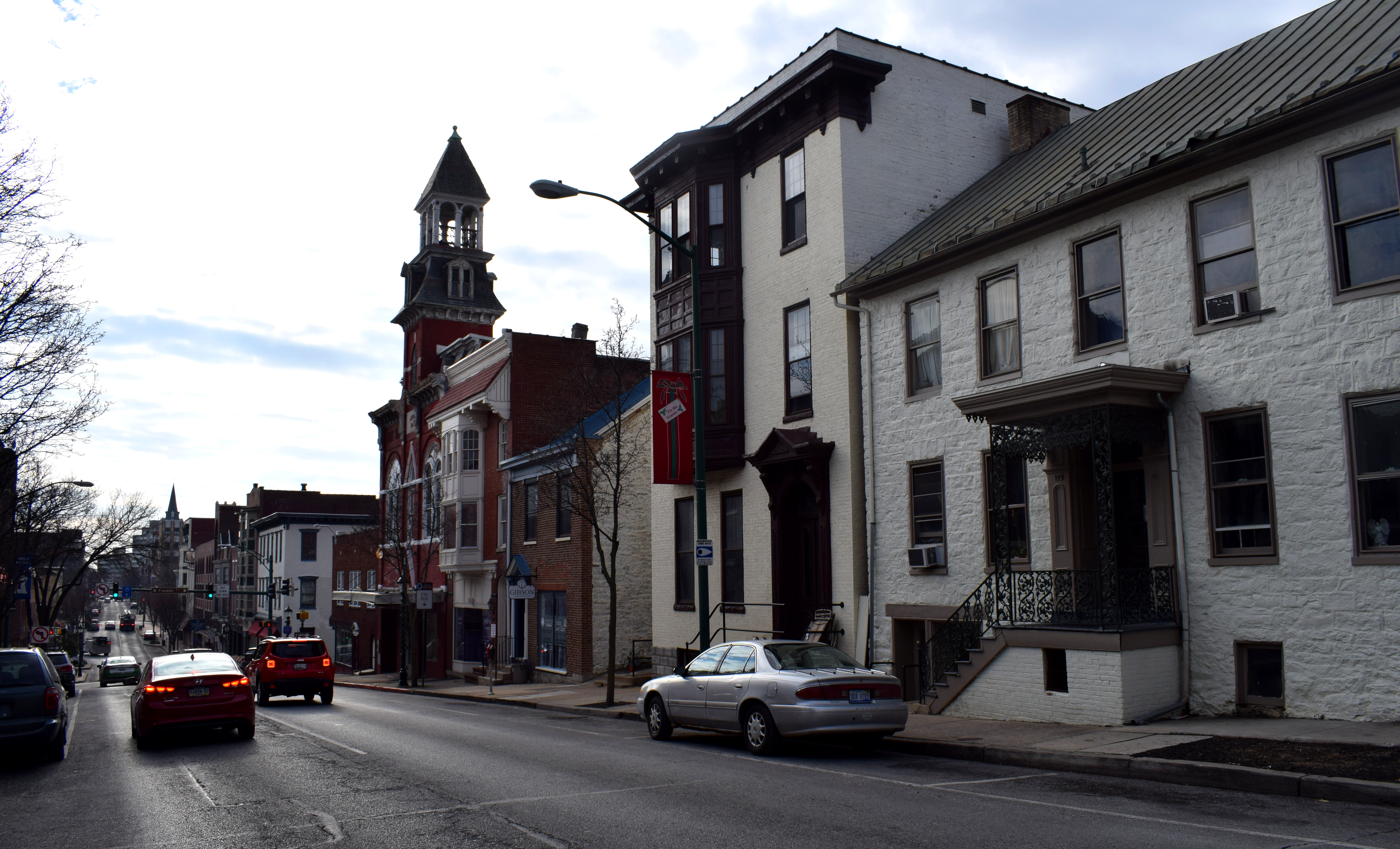 A properly functioning pedestrian street closed off to traffic with cafes, restaurants, book shops, museums and located near the city’s churches and city hall could go a long way in injecting some life into the city’s fabric.
A properly functioning pedestrian street closed off to traffic with cafes, restaurants, book shops, museums and located near the city’s churches and city hall could go a long way in injecting some life into the city’s fabric.
 Moreover, Hagerstown could take advantage of its relatively equal proximity to both Washington DC and Baltimore. The city could be a cheaper alternative for businesses to locate in whose primary operations and clientele are in Baltimore and Washington DC. Townhouses in the center of Hagerstown are selling for under $100,000. That’s a pretty attractive option for young startups and small businesses looking to cut costs.
Moreover, Hagerstown could take advantage of its relatively equal proximity to both Washington DC and Baltimore. The city could be a cheaper alternative for businesses to locate in whose primary operations and clientele are in Baltimore and Washington DC. Townhouses in the center of Hagerstown are selling for under $100,000. That’s a pretty attractive option for young startups and small businesses looking to cut costs.
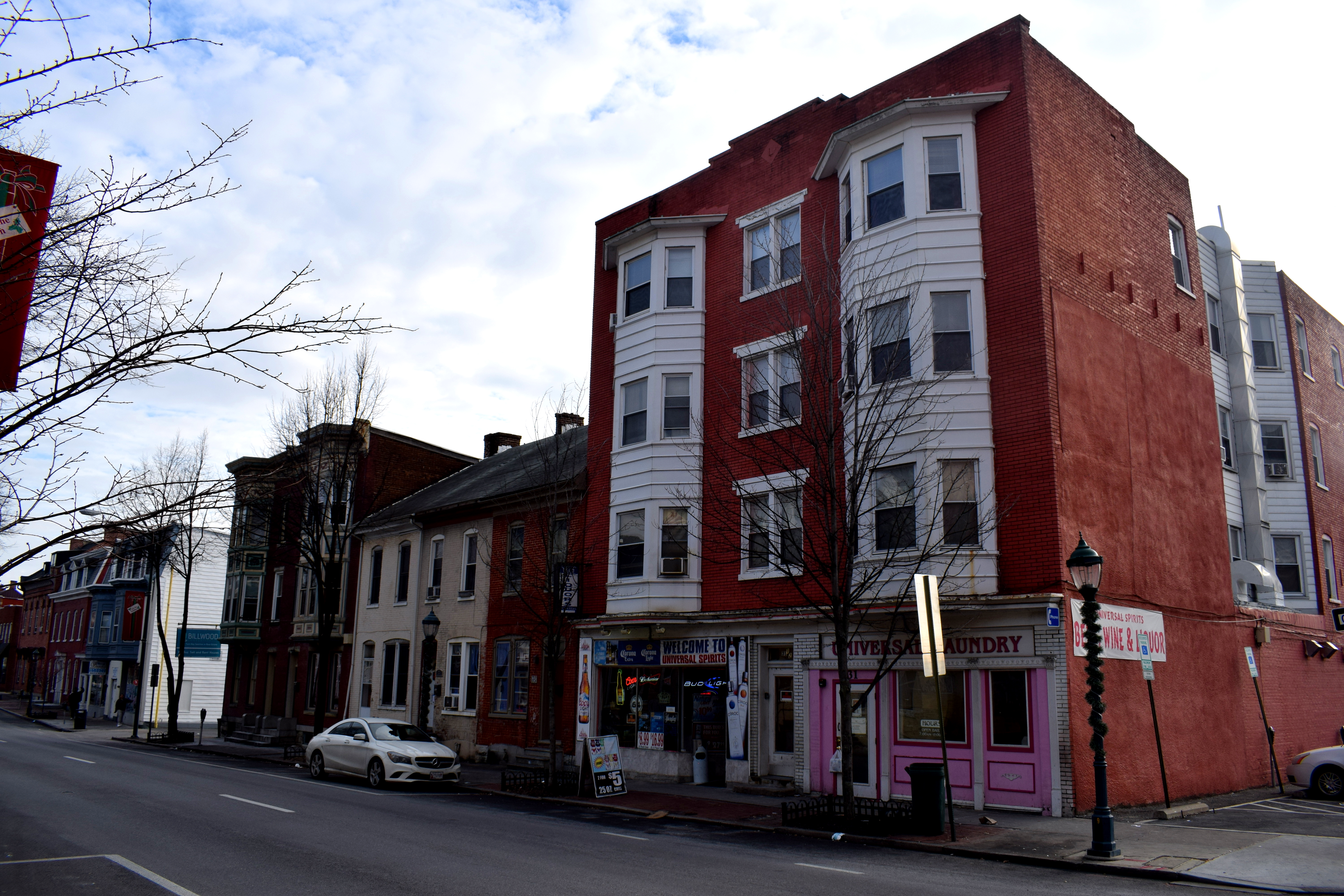 However, millennials move to cities that feel alive, creative and innovative. A lot of this creativity is missing in Hagerstown, but it could be boosted by the creation of a pedestrian street in the center, the promotion of bike lanes, arts districts and tourist landmarks.
However, millennials move to cities that feel alive, creative and innovative. A lot of this creativity is missing in Hagerstown, but it could be boosted by the creation of a pedestrian street in the center, the promotion of bike lanes, arts districts and tourist landmarks.
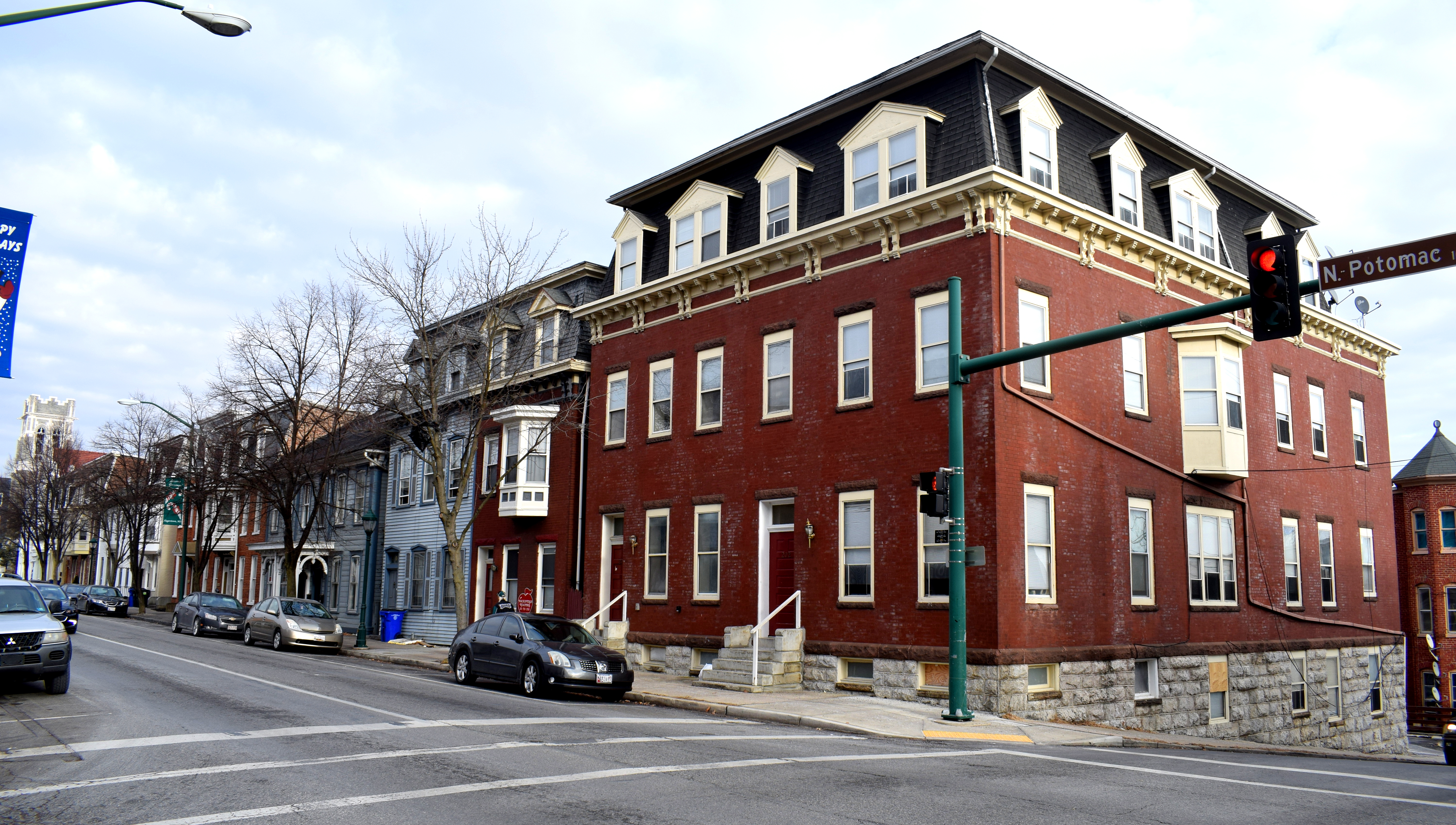 Overall Hagerstown has enormous potential to develop as a tourist destination and hot spot for young people to move to. The streets are beautiful, the town has history. All that is needed is a little vision and innovation.
Overall Hagerstown has enormous potential to develop as a tourist destination and hot spot for young people to move to. The streets are beautiful, the town has history. All that is needed is a little vision and innovation.
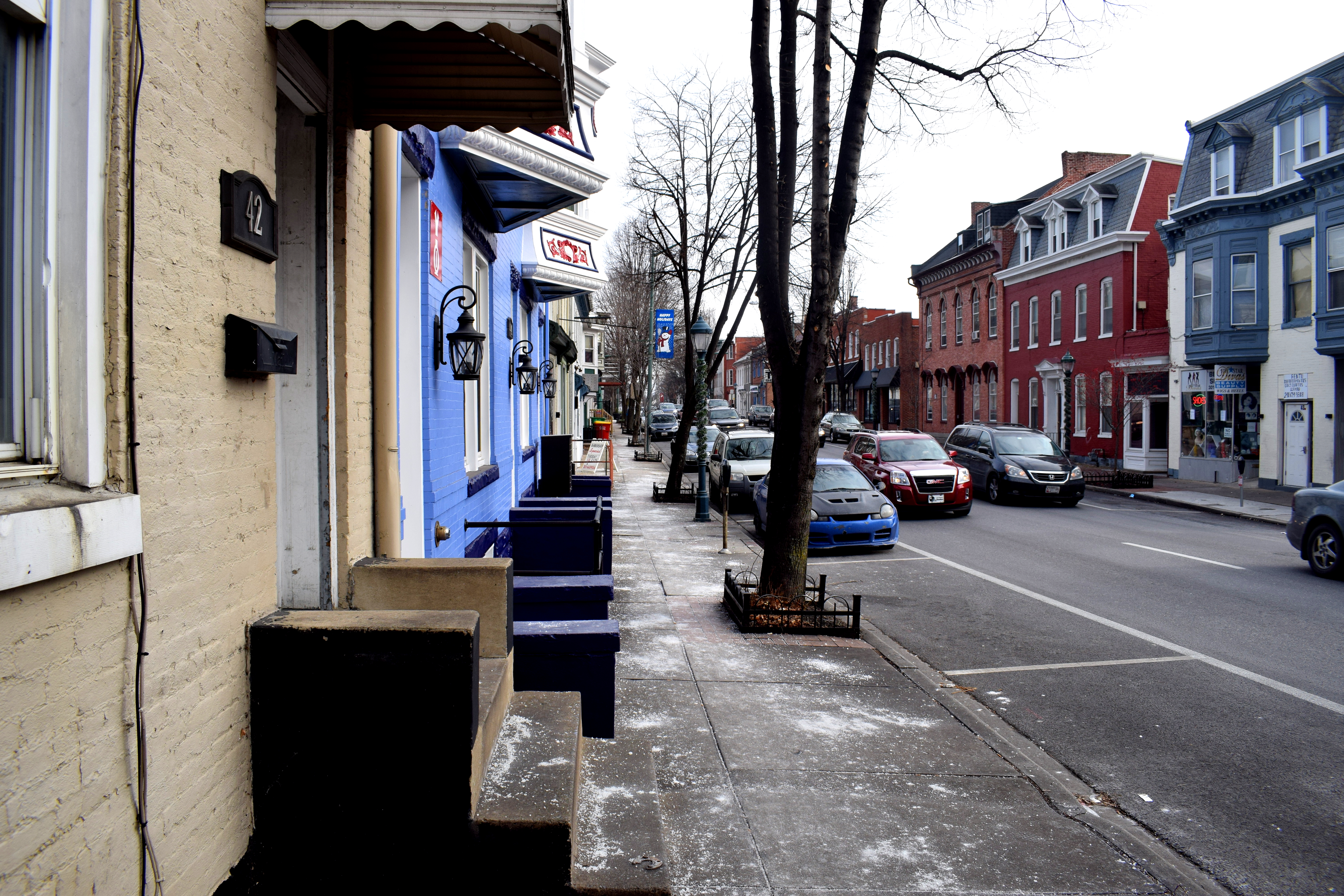 Houses like these cost a fraction of what they would cost in Washington DC or Baltimore, and are cheaper than neighboring Frederick as well.
Houses like these cost a fraction of what they would cost in Washington DC or Baltimore, and are cheaper than neighboring Frederick as well.
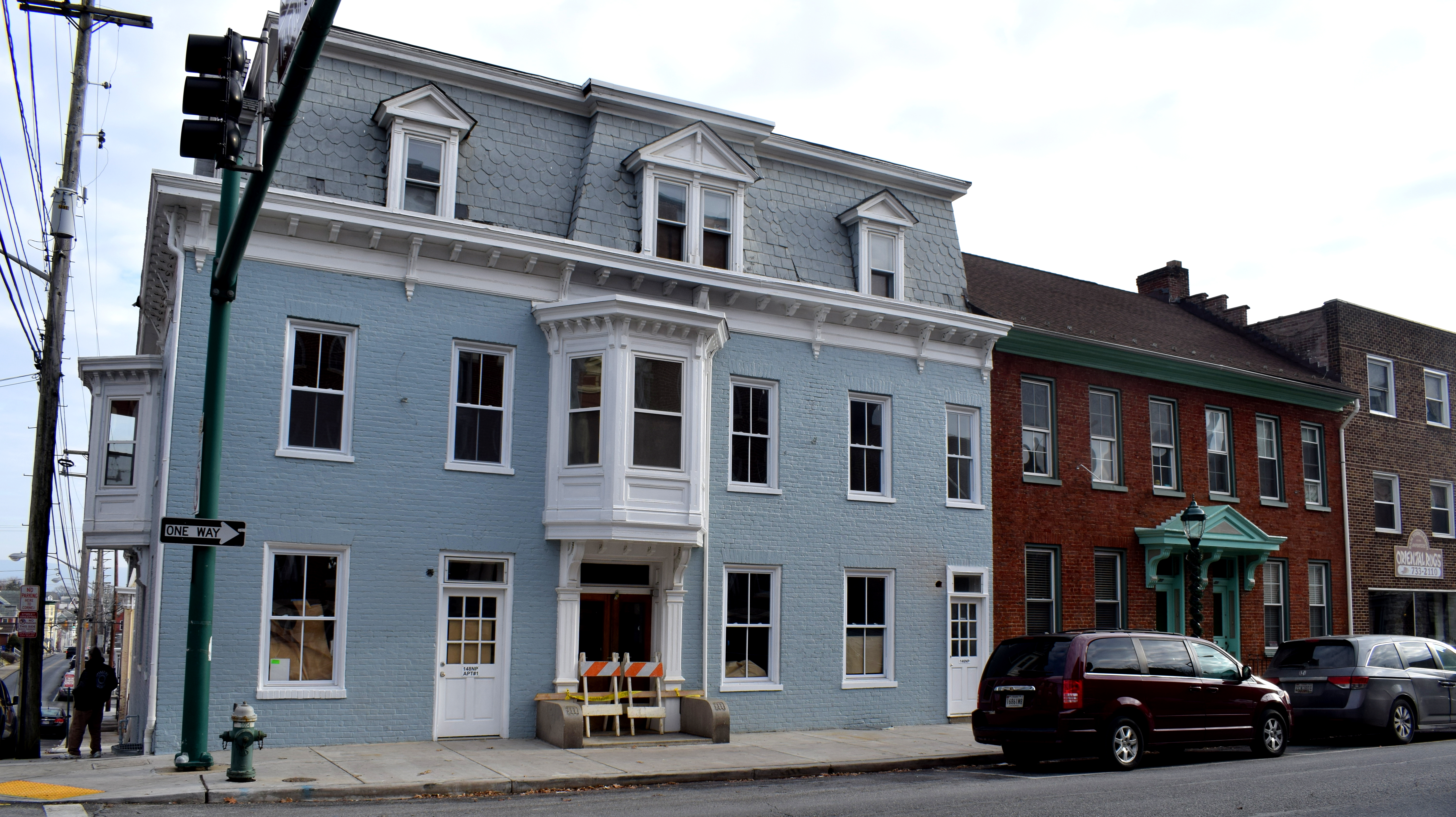 A town with such a rich history deserves to be visited more often and appreciated.
A town with such a rich history deserves to be visited more often and appreciated.
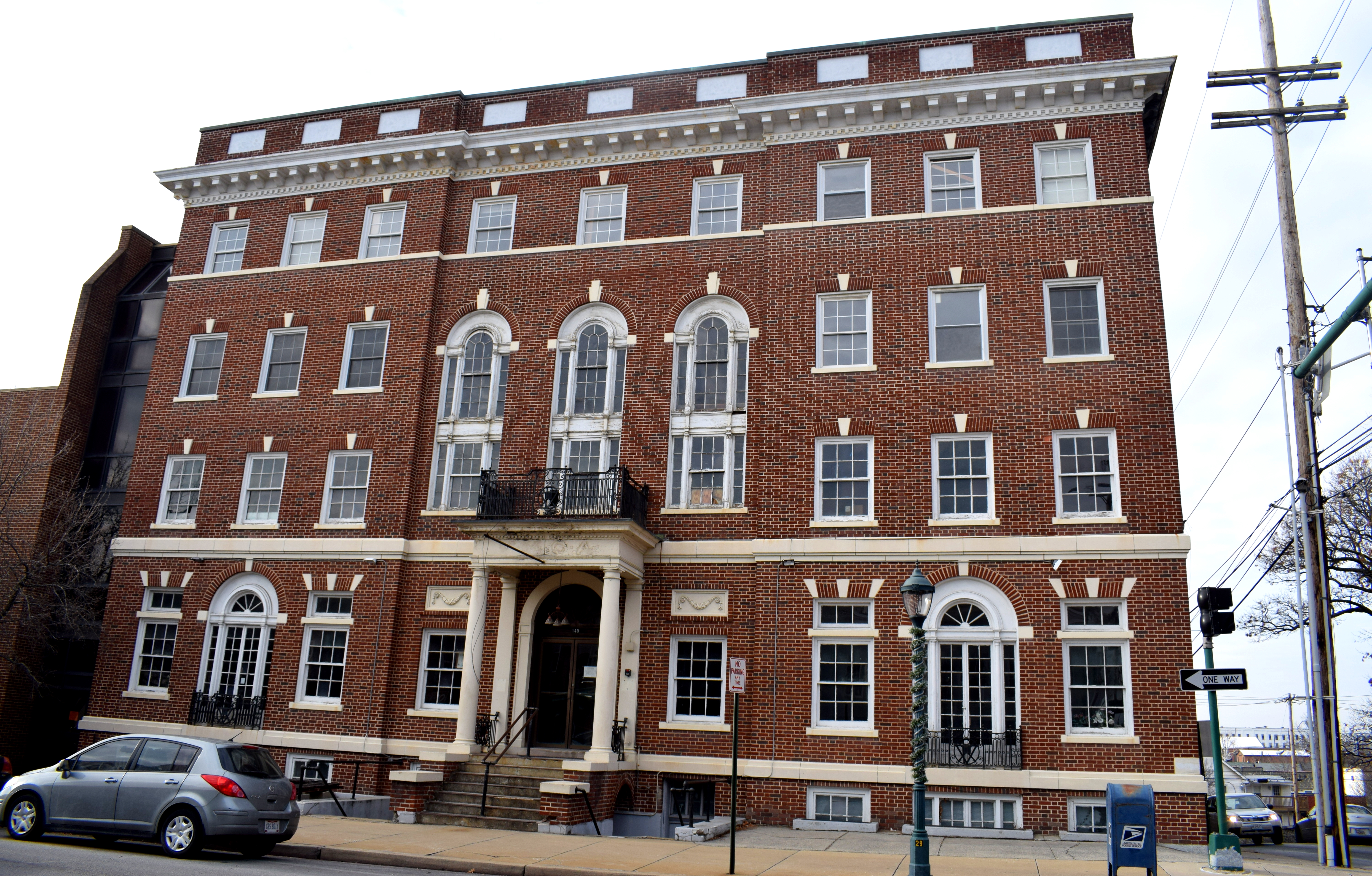
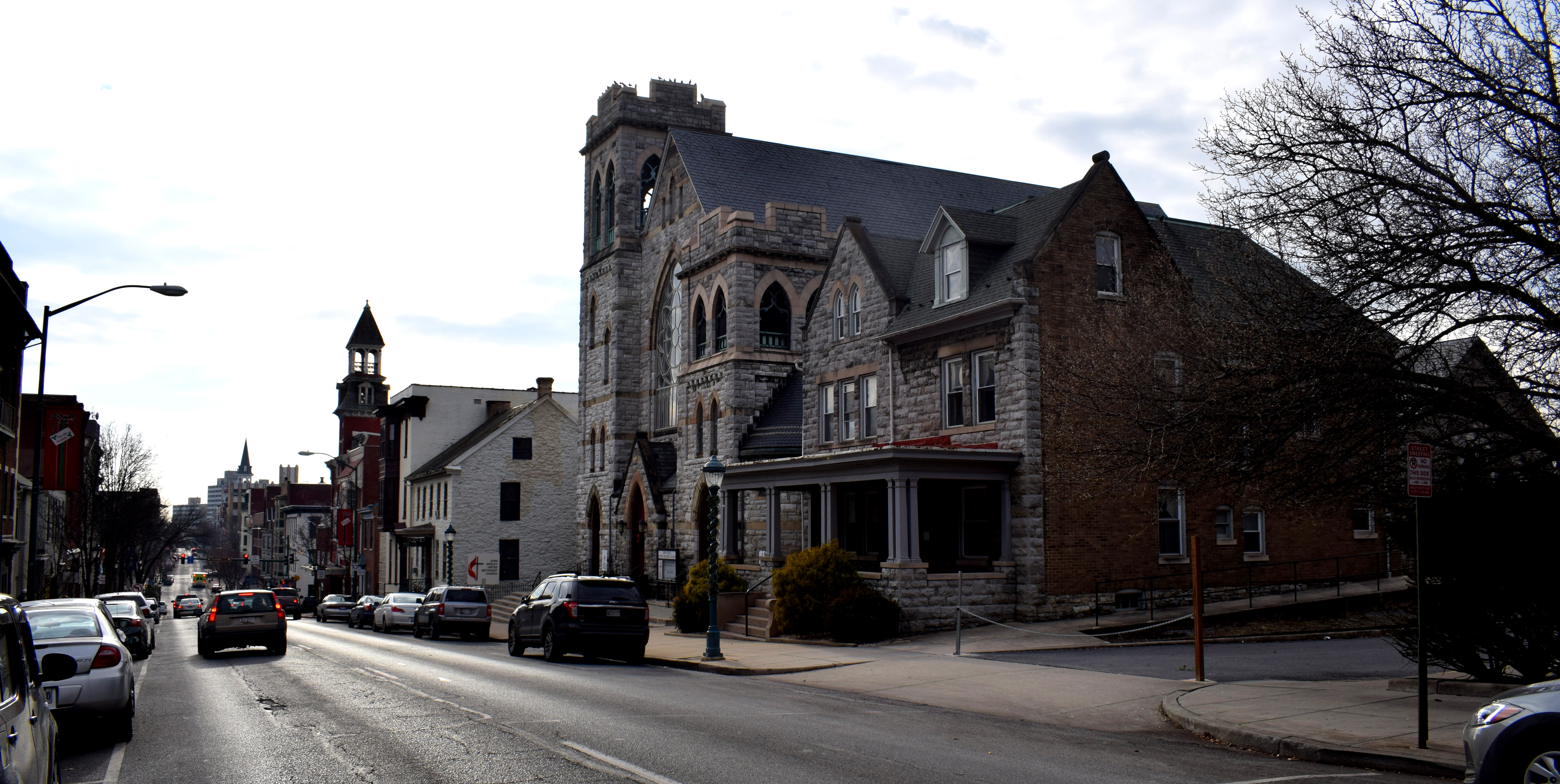 Overall Hagerstown is a beautiful city with a rich history that deserves to be visited more often from people in Washington DC and Baltimore. The town has huge potential to attract younger talent by branding itself as a cheap option for small businesses and startups that serve the Baltimore and Washington DC markets. A major step in this direction would be to pedestrianize one of the city’s main streets, such as North Potomac Street. The next step would be to encourage cafes, restaurants, bookshops and other small businesses to open their shops there. The creation a vibrant city center could then attract hordes of young people and creatives to move to the city.
Overall Hagerstown is a beautiful city with a rich history that deserves to be visited more often from people in Washington DC and Baltimore. The town has huge potential to attract younger talent by branding itself as a cheap option for small businesses and startups that serve the Baltimore and Washington DC markets. A major step in this direction would be to pedestrianize one of the city’s main streets, such as North Potomac Street. The next step would be to encourage cafes, restaurants, bookshops and other small businesses to open their shops there. The creation a vibrant city center could then attract hordes of young people and creatives to move to the city.
The city should also lobby hard in favor of high-speed rails. There have been several proposals in recent years to bring back high-speed rail to the United States. California is introducing high-speed rail to connect San Diego, Los Angeles and San Francisco. There have been plans to create an Ohio Hub connecting Chicago, Cleveland, Detroit and Toronto in Canada. Any rail line that would potentially connect Baltimore and Washington DC to cities in the Midwest such as Pittsburgh, Columbus and Cleveland would pass through Hagerstown. If such a line is ever built, having it stop in Hagerstown could greatly benefit the city. It would make commuting to Washington DC, Baltimore or even Pittsburg a simple one to two hour journey. Hagerstown could return to its former status as a hub city with several different railroads passing through. But this is a long ways away. Until then, a simple pedestrian street in the center would suffice.
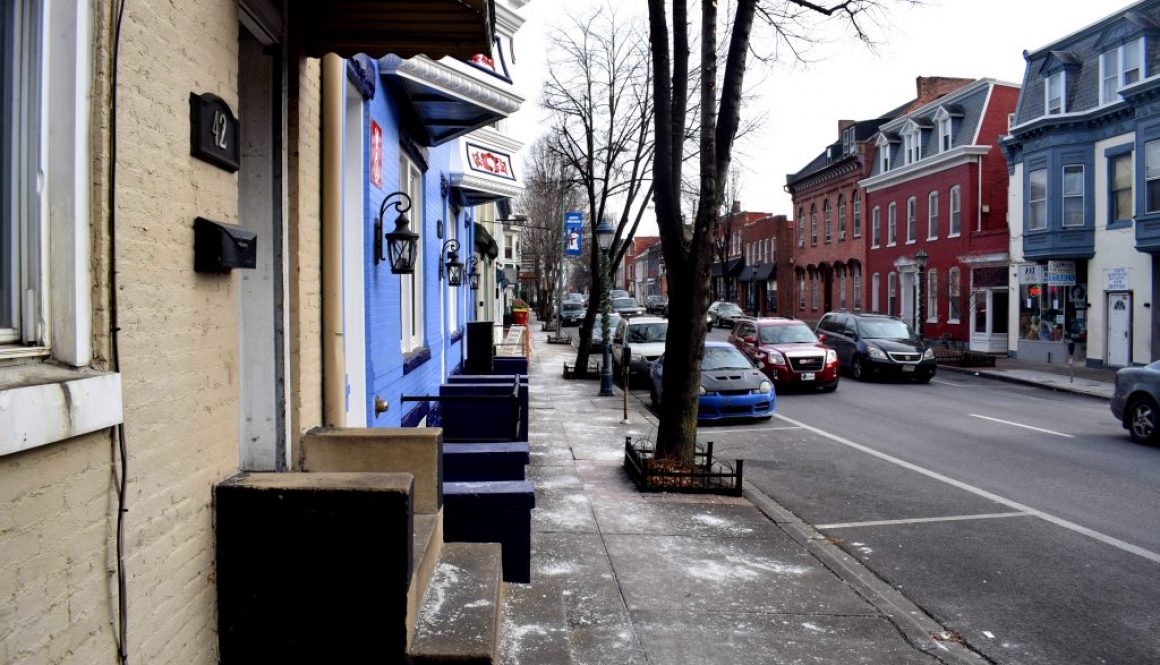
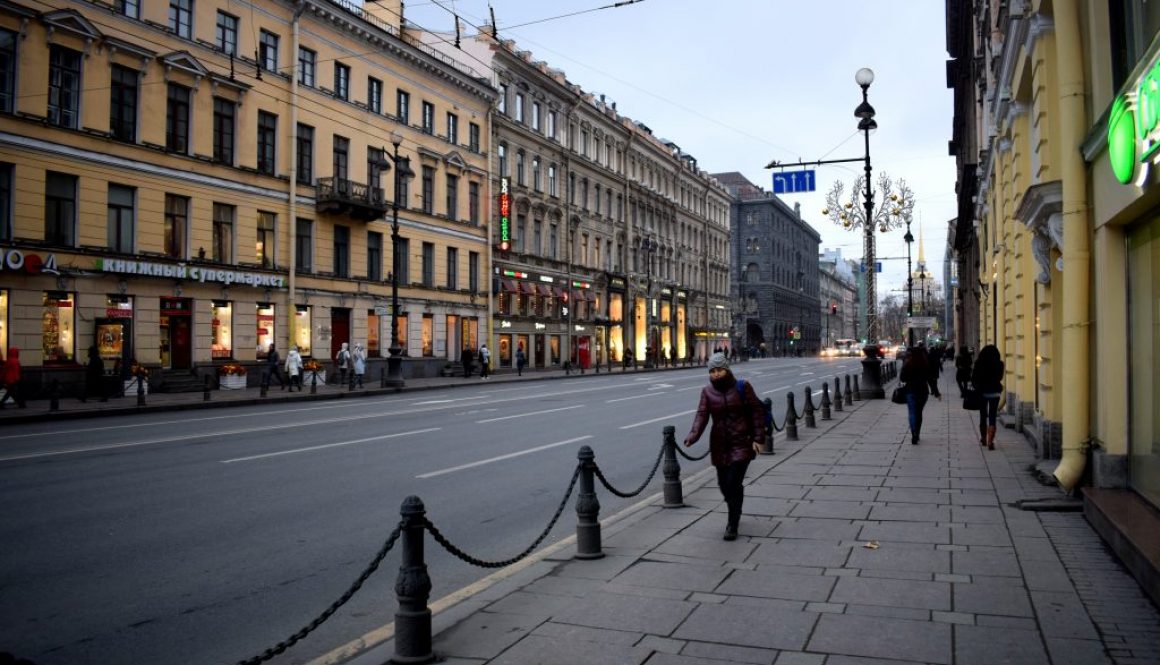
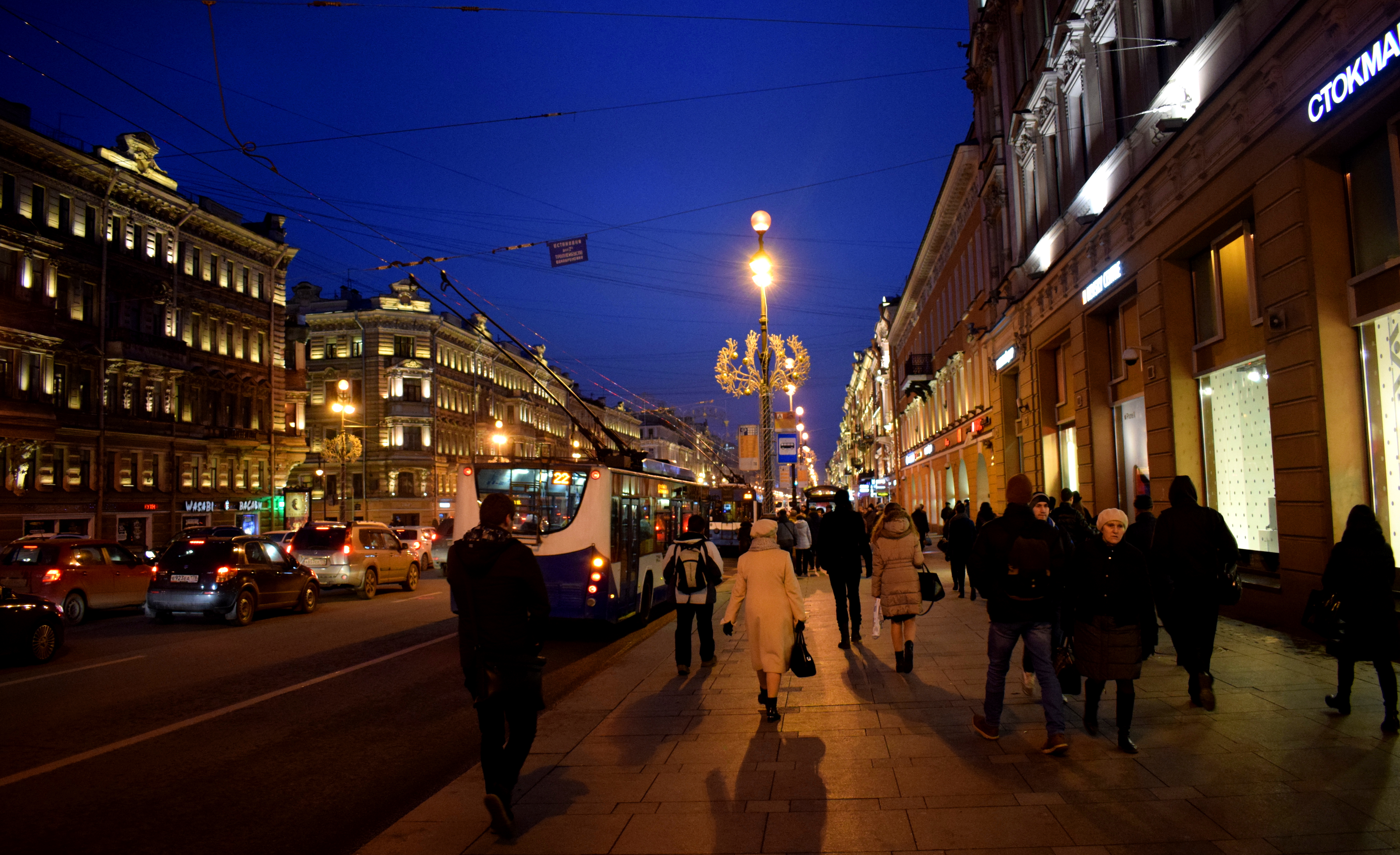
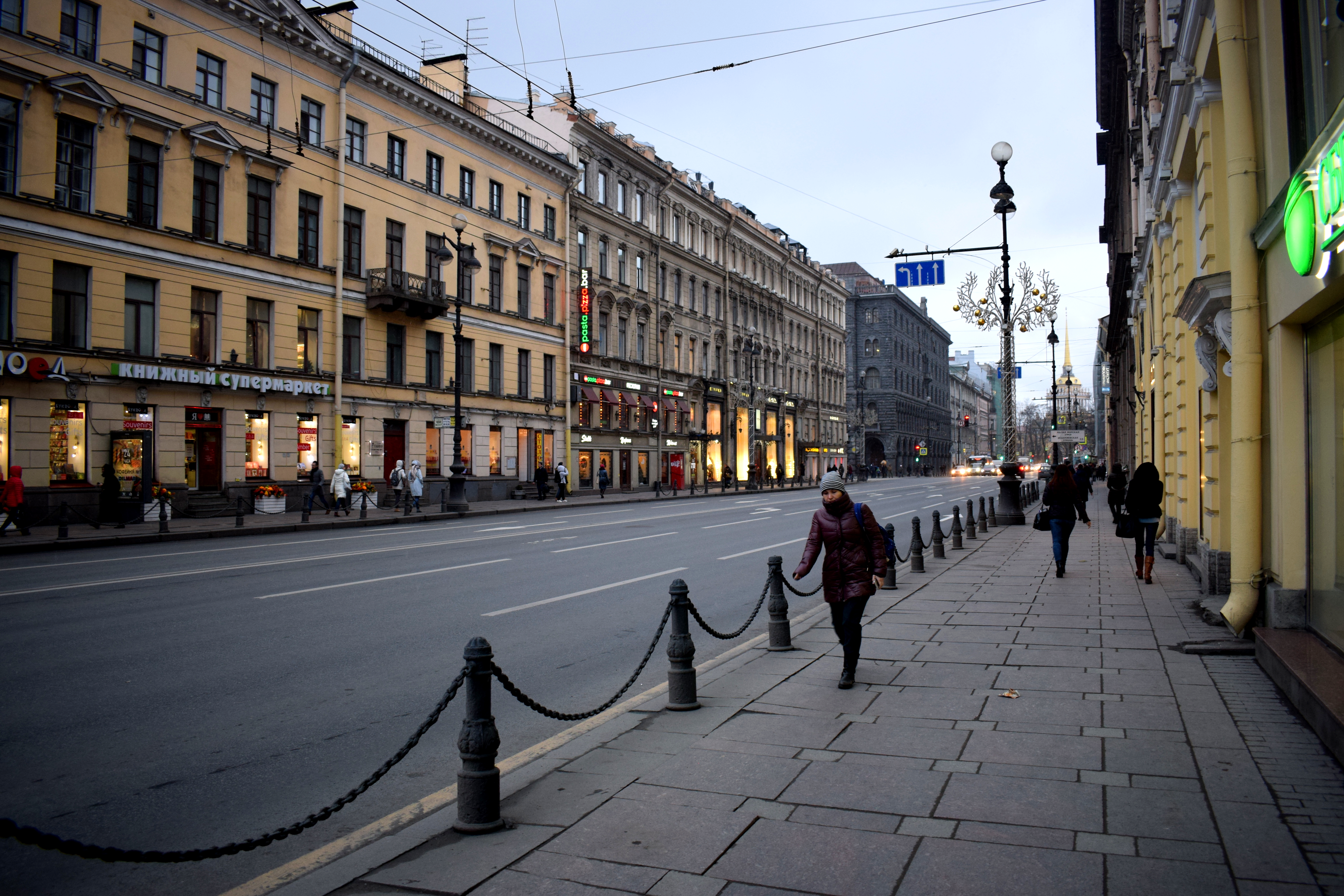 3.) It’s cold: Saint Petersburg is freezing. Temperatures dip to -30 degrees on certain days of the winter and hover around zero or below for the remainder. Saint Petersburg is also a windy city. Located next to the Baltic Sea, the city has a constant breeze blowing through it, which makes the already freezing temperatures even harder to bear.
3.) It’s cold: Saint Petersburg is freezing. Temperatures dip to -30 degrees on certain days of the winter and hover around zero or below for the remainder. Saint Petersburg is also a windy city. Located next to the Baltic Sea, the city has a constant breeze blowing through it, which makes the already freezing temperatures even harder to bear.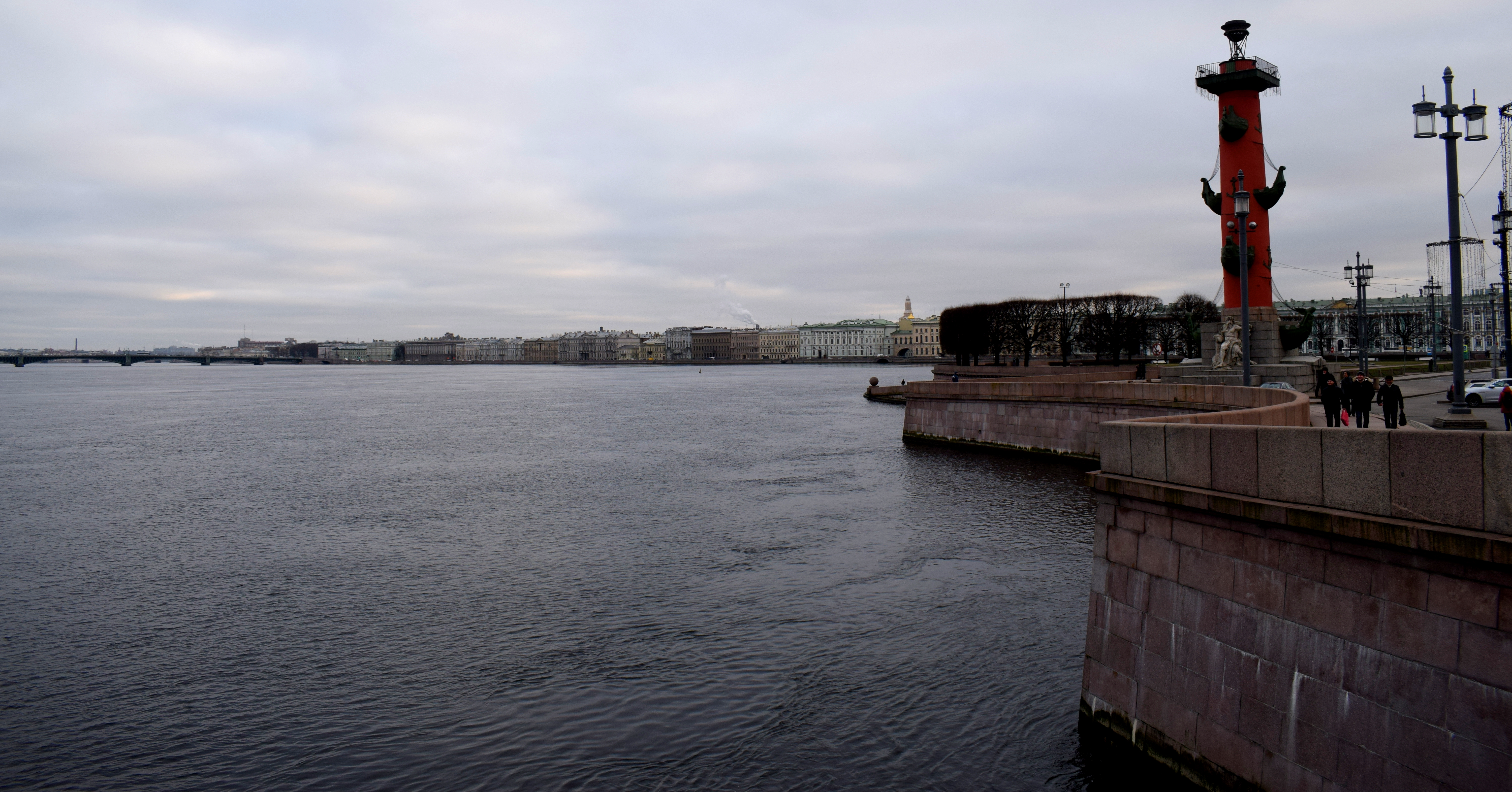 4.) It’s empty: A city that’s so cold doesn’t exactly take toward leisurely walking. Most locals shut themselves inside during the winter and let the tourists do the walking. As a result, the city can often feel like a ghost town, with magnificent parks, streets and canals left empty.
4.) It’s empty: A city that’s so cold doesn’t exactly take toward leisurely walking. Most locals shut themselves inside during the winter and let the tourists do the walking. As a result, the city can often feel like a ghost town, with magnificent parks, streets and canals left empty.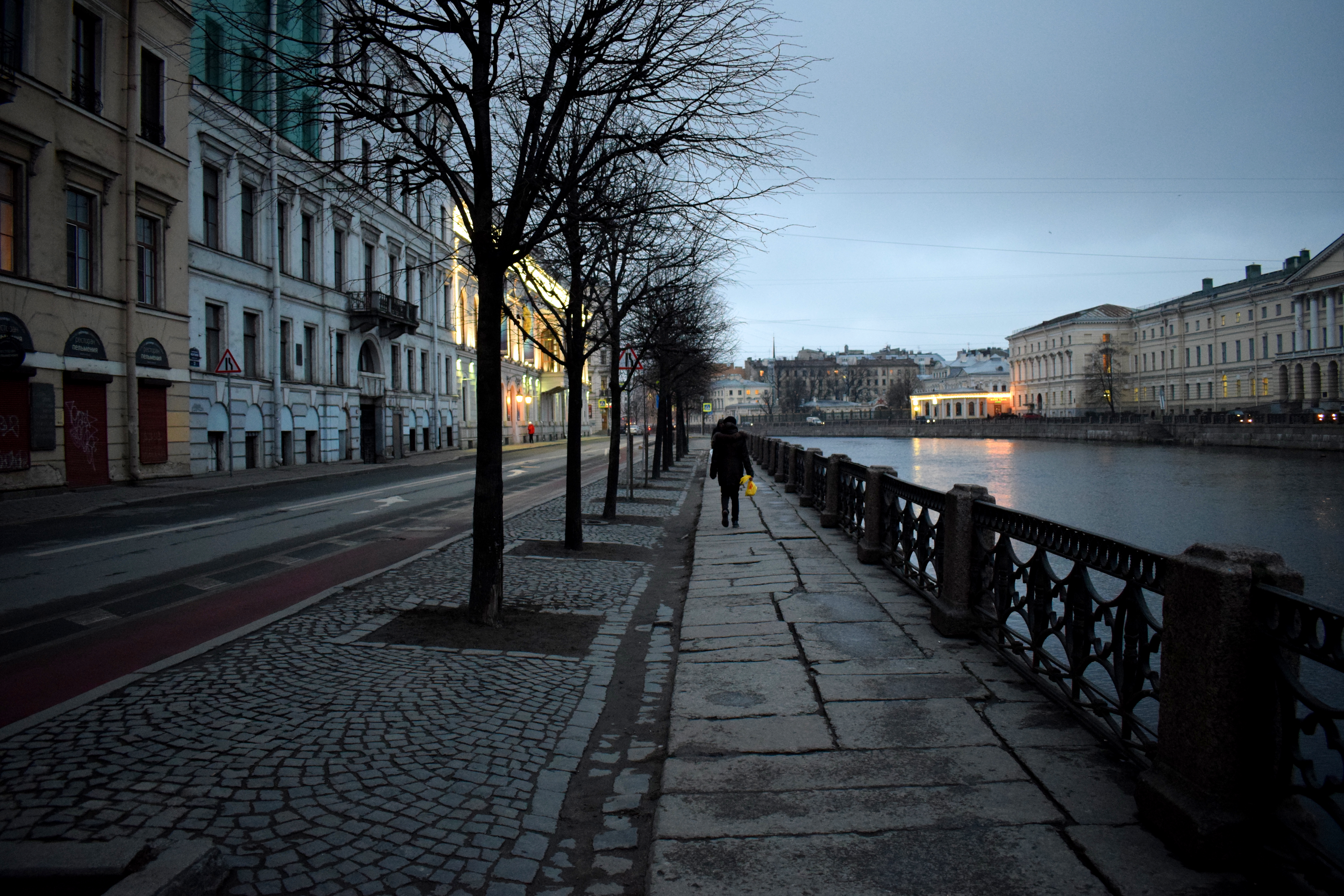 5.) It’s European: What do you get when you build a city so far north that remains cold, dark and empty for most of the year? You get the strangest city in Europe and possibly the entire world. Built on a swamp in only 1703 at a time when most of Europe’s other great capitals had existed for centuries, Saint Petersburg served as a symbol by the Czars to prove to the rest of Europe that Russia was also European.
5.) It’s European: What do you get when you build a city so far north that remains cold, dark and empty for most of the year? You get the strangest city in Europe and possibly the entire world. Built on a swamp in only 1703 at a time when most of Europe’s other great capitals had existed for centuries, Saint Petersburg served as a symbol by the Czars to prove to the rest of Europe that Russia was also European.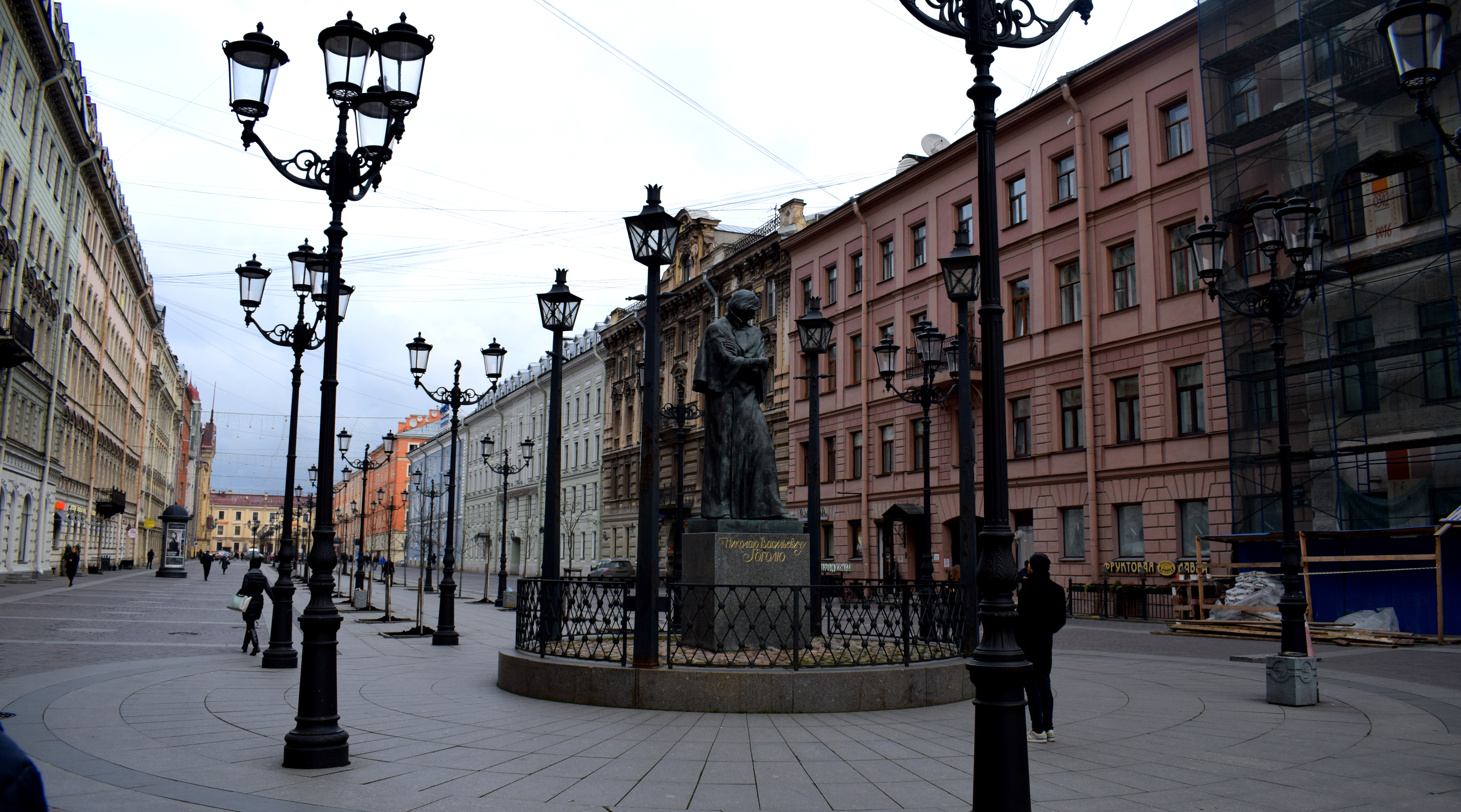 The Czars really did try hard. Saint Petersburg contains narrow Dutch style houses around picturesque canals reminiscent of the best of Amsterdam. The city has neoclassical buildings and squares with Greek and Roman style columns and temples replicating the beauties of Italy and Greece. There are enormous churches, ancient orthodox cathedrals, massive stone fortresses, ports and bridges all showcasing the city’s European heritage.
The Czars really did try hard. Saint Petersburg contains narrow Dutch style houses around picturesque canals reminiscent of the best of Amsterdam. The city has neoclassical buildings and squares with Greek and Roman style columns and temples replicating the beauties of Italy and Greece. There are enormous churches, ancient orthodox cathedrals, massive stone fortresses, ports and bridges all showcasing the city’s European heritage.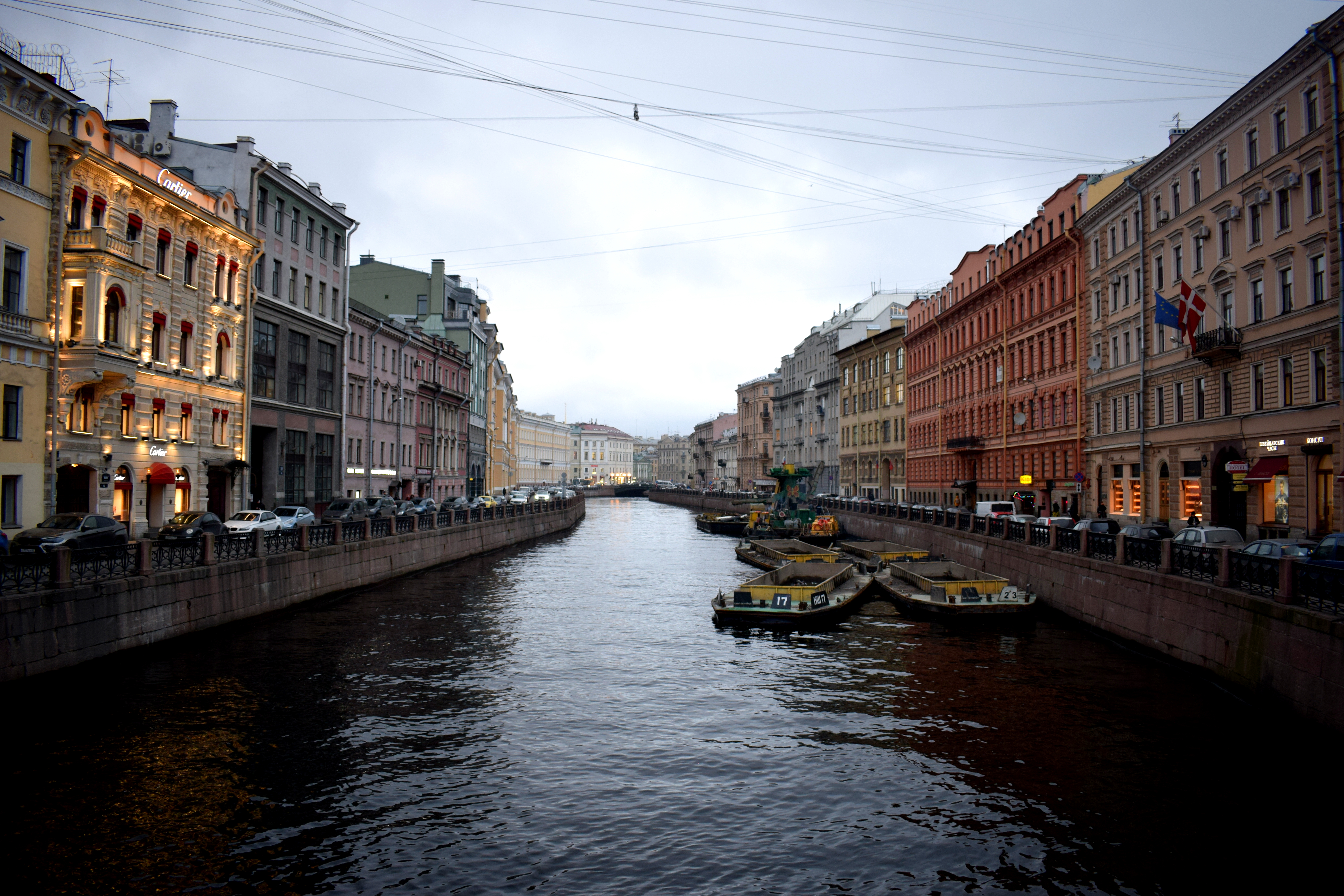 So why visit Saint Petersburg in the winter? Saint Petersburg offers a surreal travel experience that you do not get when visiting other cities in Europe. There is something hauntingly beautiful roaming around Saint Petersburg’s empty streets in the winter at nine in the morning with the moon still out and snow on the ground and the city covered in darkness. The atmosphere is gloomy but beautiful. European buildings tower over you and offer a testament to a former era when Russia was a leading European power and for centuries ruled over the biggest landmass on the globe. If anything, the cold and darkness of Saint Petersburg’s winter will make you appreciate the warmth of Russia more. You can only capture this feeling by visiting in the winter time.
So why visit Saint Petersburg in the winter? Saint Petersburg offers a surreal travel experience that you do not get when visiting other cities in Europe. There is something hauntingly beautiful roaming around Saint Petersburg’s empty streets in the winter at nine in the morning with the moon still out and snow on the ground and the city covered in darkness. The atmosphere is gloomy but beautiful. European buildings tower over you and offer a testament to a former era when Russia was a leading European power and for centuries ruled over the biggest landmass on the globe. If anything, the cold and darkness of Saint Petersburg’s winter will make you appreciate the warmth of Russia more. You can only capture this feeling by visiting in the winter time.